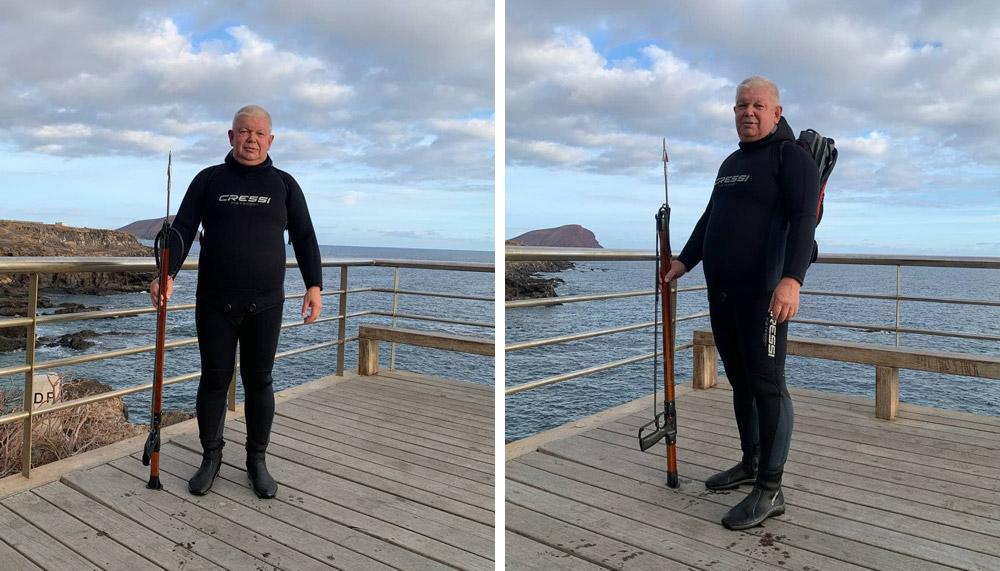
💎It is very important to know! I present my own subjective opinion on how to choose equipment and gear for underwater hunting. I have done a lot of work, studying and analyzing the modern market. The basis and the main principles of product selection: are budget affordability and ease of use.
Essential Spearfishing Gear: Building Your Underwater Arsenal
Equip Yourself for Success: Spearfishing Gear Every Beginner Needs
Spearfishing is an ancient practice that has evolved into a popular sport and recreational activity for those who love the underwater world and the thrill of the hunt. This adrenaline-pumping sport combines diving, swimming, and hunting skills to pursue and catch various fish species in their natural habitat, making it both a challenging and rewarding pursuit.
Essential Gear Guide: Gearing Up for Your First Spearfishing Adventure
In spearfishing, safety and success largely depend on being well-equipped with the right gear. Choosing quality equipment tailored to your needs and skill level not only enhances your diving experience but also ensures your safety and increases your chances of catching fish. Proper gear also helps to minimize the potential risks associated with diving and hunting underwater, such as entanglement, cold exposure, and difficulties with buoyancy control.
Mastering the Hunt: Top Tips for Assembling Your Spearfishing Kit
This article aims to provide a comprehensive guide on the essential spearfishing gear for beginners, helping them make informed choices when investing in their equipment. By understanding the different types of gear available, their uses, and how to choose the right gear for their specific needs, novice spearfishers will be better equipped to embark on their underwater adventures with confidence and skill.
My Scuba Hunting Equipment: Essential Gear for Spearfishing Enthusiasts
I’ve been underwater hunting for about four years now. My son got me into this hobby. The first time I put on my 5 mm wetsuit, diving shoes, real snorkeling fins, mask with the tube, belt, and gloves, I got tired and immediately wanted to go home. Then the first dive with a rifle. I got carsick, dizzy, very hot, and didn’t even want to take a shot. After 5 dives everything became easy and simple.
Over time I began to enjoy sailing and exploring the marine world. In the next stage – I began to study the biology of fish, hunting places, I got to experience and the first trophies. Now swimming with a crossbow gives me more emotions than just swimming on the beach.
Got my license. Learned how to take the necessary safety precautions. I watched a lot of training videos on YouTube. I want to share my knowledge and show my equipment. Give my comments and characteristics. Show how it differs from similar models. To make it easier for novice hunters to choose.
My Spearguns
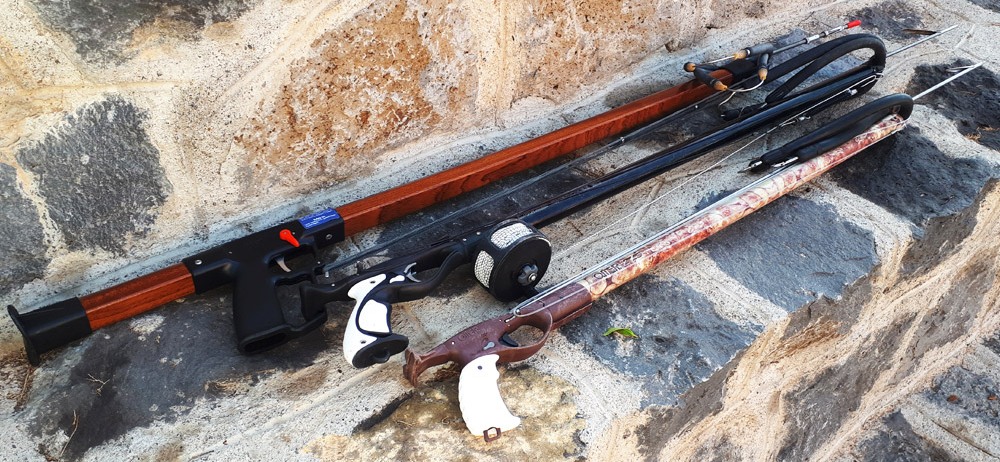
💎There are three main types of spearguns used in spearfishing – pneumatic, band-powered, and hybrid.
| Type of Speargun | Description | Pros | Cons |
|---|---|---|---|
| Pneumatic | Uses compressed air to propel the spear, known for power and accuracy. | High power, excellent accuracy, great underwater performance | More challenging to load and maintain, may not be suitable for beginners |
| Band-powered (Sling/Rubber) | Utilizes rubber bands to launch the spear, most common type used by beginners. | Simplicity, affordability, ease of use | Less power and accuracy compared to other types |
| Hybrid | Combines features of both pneumatic and band-powered spearguns, offering a balance between power and accuracy. | Balance of power, accuracy, and ease of use | More expensive, may require more maintenance |
💎Factors to consider when choosing a speargun:
| Factor | Description | Recommendations for Beginners |
|---|---|---|
| Power | Determines the range and penetration of the spear. | Start with a manageable power, such as a band-powered speargun, for safety and ease of use. |
| Accuracy | Crucial for successful spearfishing, affecting the chances of a successful catch. | Look for a speargun with good accuracy, which may improve as you gain experience. |
| Ease of Use | Refers to the comfort and manageability of loading, aiming, and firing a speargun. | Choose a user-friendly speargun, such as a band-powered speargun, to develop skills and confidence. |
| Overall Recommendation | Considerations for beginners when selecting their first speargun. | Begin with a band-powered speargun, then upgrade to a pneumatic or hybrid speargun as skills improve. |
The underwater crossbow (underwater gun) is the basic equipment for successful hunting. The right rifle allows for fewer blank shots (without hitting any fish). Useful qualities: strong arrow, powerful rubber rods, shot accuracy, durability, equipped with additional line reel, neutral buoyancy.
AB Biller 42 Special Speargun

This is my third shotgun. I chose it according to the following criteria: the comfortable shape of the gun stock, the base of the gun (mahogany), easy to load, has a powerful shot (can be equipped with up to three rubber rods), good hunting for big fish, comfortable, reliable and quality, powerful arrow. The gun is for the experienced hunter who wants to experience the pleasure of hunting.
Only three disadvantages in my opinion: a little heavy when carrying it to the place of hunting, the stopper for the kevlar rope often falls off when charging – you have to spend time to adjust), expensive arrow. See my review for more information – Ab Biller 42 Speargun Review.
Shot after shot, the AB Biller 42 Speargun is the perfect weapon for any hunting big game underwater. It features a precision-milled stainless steel barrel, shaft, and handles for accuracy and reliability, as well as our patented Power Brake system for increased power and control. You’ll be hard to beat with this speargun in your arsenal.
AB Biller 42 is the most powerful speargun available on the market. It was designed for spearfishermen with the highest experience of hunting underwater. This speargun is equipped with an ultra-powerful piston gun, which shoots shafts up to 50 feet underwater. It’s not that easy to use it, but once you master it, you’ll be able to shoot down your prey with precision and accuracy.
Cressi Cherokee Open Speargun 90 cm
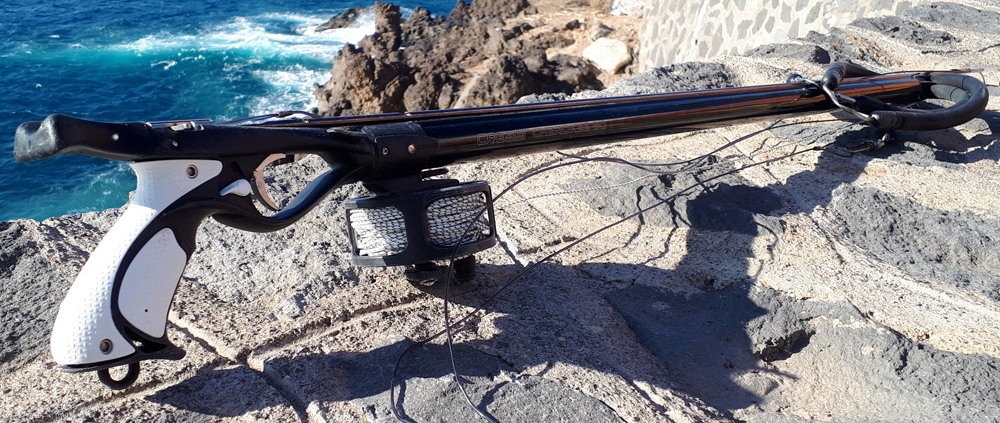
A classic top gun. Time-tested, good reviews. No flaws. A little heavy and massive. The main thing is to choose the right length of line, install a spool with an extra cord, periodically sharpen the arrow, and rinse with fresh water after every hunt. A high score on all indicators.
The Cherokee is the latest in professional, underwater guns. It’s lightweight, accurate, and shoots to an impressive distance. Ideal for spearfishing or underwater hunting, the Cherokee is constructed with the best materials. With features like a stainless steel barrel and a fiberglass butt section, this gun is built to last. And don’t forget about the Cressi Cherokee’s lifetime warranty!
From the first time you see her, your heart will be captured. The Cherokee 90cm Speargun has a sleek design with balanced power and sleek beauty. You’ll find her lightweight will keep you strong and be able to go the distance. Weighing in at less than 20 pounds, this might be the most beautiful gun you’ll ever see.
Omer Cayman GI Camu 75 Speargun

My first gun. Mastered and learned it. For travel, snorkeling near the shore, and trial hunting in new places, it’s indispensable. Accurate shot of the game at a distance of 2 meters. A closed muzzle makes it easy to load the gun. Light and comfortable. Never let me down. I recommend it to all beginners. You can hunt successfully even with only an 18 mm pull. A good choice for the first dives.
The Cayman Camu 75 Spear is for divers who want an easy-to-use, hardworking tool. It’s perfect for spearfishing and collecting underwater objects. Time to get wet and wild! Get the professional underwater spear gun for some fun or hunting action. The Camu 75 is a full-size, stainless steel gun with a deluxe grip and a serrated spike on the end of the shaft. We’ve taken spearfishing to a whole new level with this gun.
My Wetsuits for Hunting
💎Importance of Thermal Protection and Buoyancy Control
Thermal protection is crucial for divers, as water conducts heat away from the body up to 25 times faster than air. Exposure to cold water can lead to hypothermia, which can be life-threatening. Wetsuits are designed to trap a thin layer of water between the suit and the skin, which is then heated by the body to create a thermal barrier. This layer of water insulates the diver from the cold water, keeping them warm and comfortable during their dive.
Buoyancy control is also a critical feature of wetsuits. As divers descend, the pressure of the water around them increases, compressing the air in their wetsuits and causing them to sink. Wetsuits are designed to provide buoyancy control by trapping air inside the suit. This trapped air provides lift, allowing the diver to maintain neutral buoyancy and control their depth while diving.
💎Different Wetsuit Materials and Thicknesses
Wetsuits are made from various materials, including neoprene, spandex, and Lycra. Neoprene is the most commonly used material and is prized for its durability and insulation properties. It is available in different thicknesses, ranging from 2mm to 7mm. Thicker neoprene suits offer better insulation but can restrict movement and are more challenging to don and doff.
Spandex and Lycra wetsuits are lightweight and flexible, providing excellent freedom of movement. However, they offer little thermal protection and are generally only suitable for warm water diving.
💎Choosing the Right Wetsuit for Your Diving Environment
Choosing the right wetsuit for your diving environment is essential for your safety and comfort. Factors to consider when selecting a wetsuit include water temperature, dive duration, and personal preferences.
In general, the colder the water, the thicker the wetsuit should be. For water temperatures below 70°F, a 5mm or 7mm wetsuit is recommended. For water temperatures above 75°F, a 2mm or 3mm wetsuit is sufficient.
Dive duration is also an important consideration. Longer dives require thicker wetsuits as the body loses heat over time. Additionally, personal preferences should be taken into account, as some divers may prefer a more flexible suit for increased mobility.
A wetsuit protects the hunter from hypothermia during the hunt (especially true for snorkeling as swimming is often up to three hours). It protects the body from cuts and bumps on rocks, makes it easier to load a diving gun.
Cressi Fisterra Spearfishing Two-Piece Wetsuit 8mm
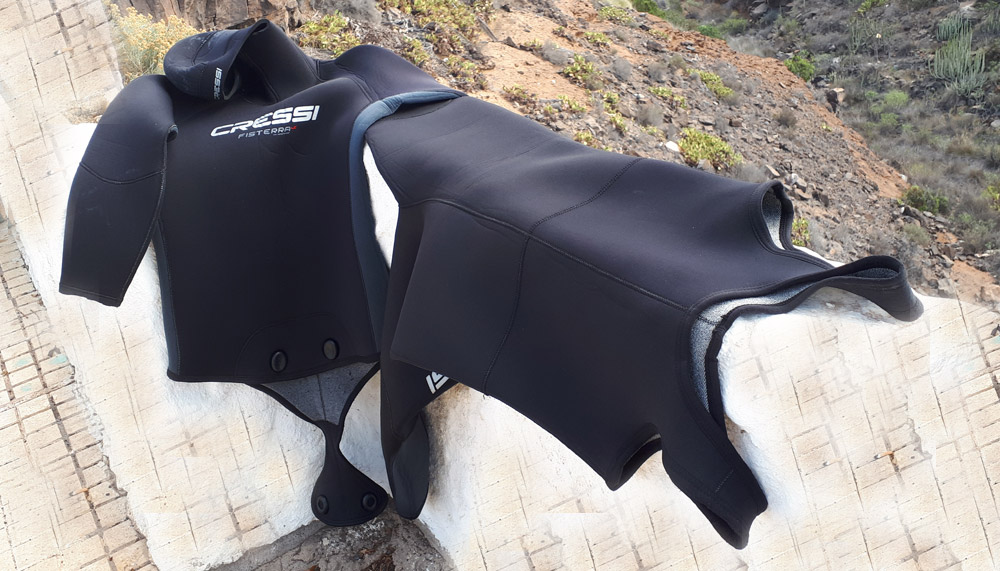
Fisterra is designed for divers who require maximum thermal performance and comfort. This model is a durable, highly waterproof, and heat resistant combination with a jacket without zippers and high pants with overalls. Low compression neoprene LC that guarantees optimal thermal protection at the bottom thanks to its high compression resistance. The nylon outer lining is very durable, with the inner elastic X-Plush terry loop and excellent gliding, which makes it easy to put on and take off the suit. Wide anti-wear knee and elbow pads from Supratex.
Say goodbye to cold water and a long time in the water. Feel free to explore deeper than you’ve ever been able to before with our revolutionary, affordable yet high-quality Cressi Fisterra wetsuit line. Cressi Fisterra is the go-to wetsuit for cold water and a long time in the water. If you’re an avid diver or just looking for a wetsuit that will last, then look no further. Our high-quality, durable materials are guaranteed to be safe, non-toxic, and environmentally friendly. The best part? No matter where you are, Cressi has a store near you!
Omer MIX 3D 3mm Wetsuit
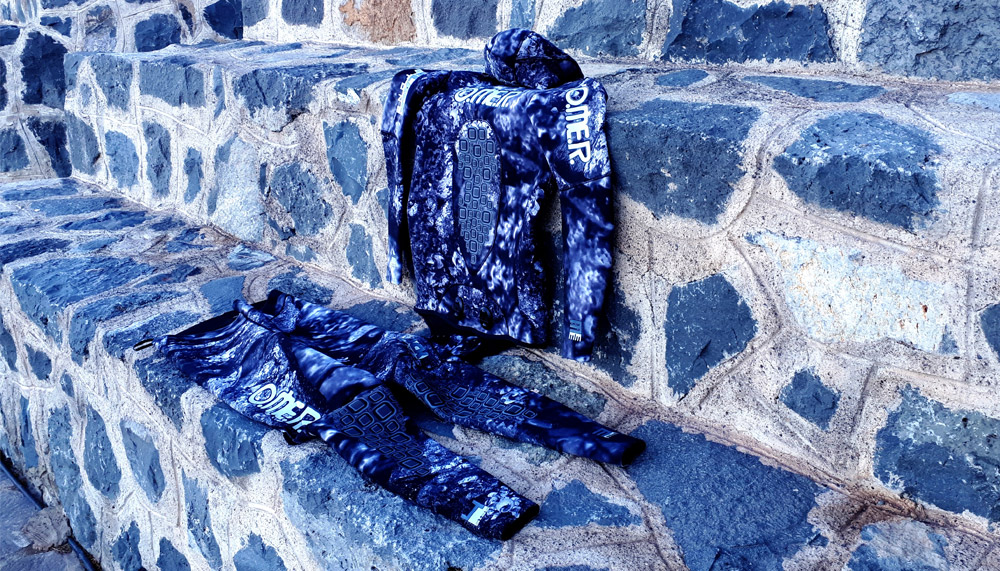
Wetsuit with mimetic design, open cell on the inside and nylon on the outside. One wetsuit uses two images of different seabed views. The finishes are top-notch. The hood is equipped with a ventilation system and is partially made of neoprene with smooth leather for more comfort. Reinforced chest cushion to comfortably assist the hunter when loading long guns.
You’ll never want to dive without one of these. The Omer MIX Camouflage Spearfishing Wetsuit is the lightest and thinnest wetsuit on the market. With 3mm neoprene and a sleek design, it provides maximum flexibility and warmth while maintaining a low profile. The wetsuit’s stretch fabric means no more tugging and pulling to get in and out of it.
Get a superior 3mm wetsuit for an affordable price! Omer was designed specifically for the needs of spearfishing and snorkeling with its lightweight and thin materials. It’s built to be tested in high-pressured environments, all while being affordable. Omer is your partner in all your aquatic adventures!
Beuchat Spearfishing Wetsuit 5mm
Beuchat wetsuit 5mm is a striking new product that is sure to appeal to all divers looking for a high-performance suit with excellent value for money. The suit is already attracting attention for its athletic performance and technical qualities. With Beuchat’s spearfishing wetsuit, you can dive deeper and for longer periods of time in water up to 30°C (86°F). Designed to be thin and lightweight, this wetsuit will give you the mobility needed to dive deep and enjoy your hunt.
My Snorkeling Masks
💎Importance of a Clear View and Comfortable Fit
A clear view and comfortable fit are essential for a safe and enjoyable spearfishing experience. A well-fitting dive mask ensures you can see your target clearly and navigate underwater without any distractions or discomfort. A mask that fits well also prevents water leakage, which can cause fogging and obstruct your vision. It is crucial to try on various masks to find the one that best fits your face shape and provides a secure seal.
💎Low-Volume Mask Design for Easier Equalization
Low-volume masks are designed to sit closer to the face, reducing the amount of air inside the mask. This design makes it easier to equalize the pressure in your ears and mask as you dive deeper. A low-volume mask is particularly beneficial for freediving and spearfishing, as it requires less effort to equalize and allows for more comfortable dives.
A snorkeling mask should be first of all airtight (not leak even a little), not to fog while swimming, not to press on the face, be transparent and allow maximum visibility.
Mares X-Vision Mask Ultra Liquidskin
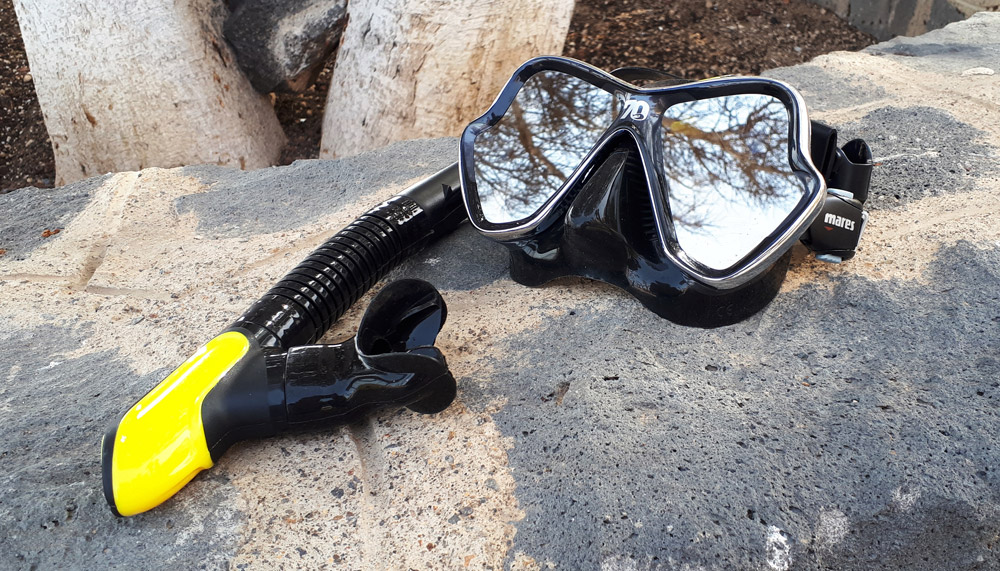
The X-Vision Ultra diving mask is made of bi-silicon with a large field of view. Winner of the Reddot Design Award. The perfect mask for fun diving. The X-Vision Ultra diving mask has a new bi-silicone face geometry that fits most face types. The face contact profile has been optimized, providing a better seal.
The nasal area has small ribs to reduce pressure and make it more comfortable to wear for longer periods of time. Gold models with mirrored lenses guarantee better light filtration. Gold version with gold mirror lenses designed to increase visibility in murky water.
The Mares X-Vision Mask is the most advanced diving mask on the market. It’s perfect for those who want to see more without compromising on comfort or safety. The X-Vision mask allows you to view more surroundings, as well as be seen easier by marine life. Its reduced drag and increased field of vision help you see better, dive deeper, and get wetter!
Dive with the best of them with the Mares X-Vision Mask. Whether you’re an experienced diver or just starting out, this revolutionary mask has it all. It boasts a curved viewport that provides you with 180° of visibility, making exploring underwater worlds easy and more enjoyable than ever before. The low volume design limits water entry to only the nose pocket, maximizing your drive time.
Cressi PANO4 DRY Snorkeling Mask Silicone Skirt Four Lens
![]()
The classic all-purpose mask. Cressi panoramic masks have been designed to give you excellent visibility, fit, durability, and comfort. The masks are made of soft, hypoallergenic silicone for a perfect seal. Soft nose pocket for easy alignment. Lenses are made of tempered glass for safety and easy cleaning. Buckles with buttons for easy strap length adjustment. Great for everyone, from youth to adults, for anyone who wants to feel safer while scuba diving.
The most comfortable scuba mask. Dive into the world of scuba diving without the hassle of liquid and bubbles. Cressi’s Pano4 Dry Mask is designed to enhance your experience and give you a greater degree of visibility. The silicone skirt and anatomical shape will provide comfort and fit for any face shape, while the tempered glass lens offers a crystal clear underwater view.
Poseidon ThreeDee 3D Diving Mask
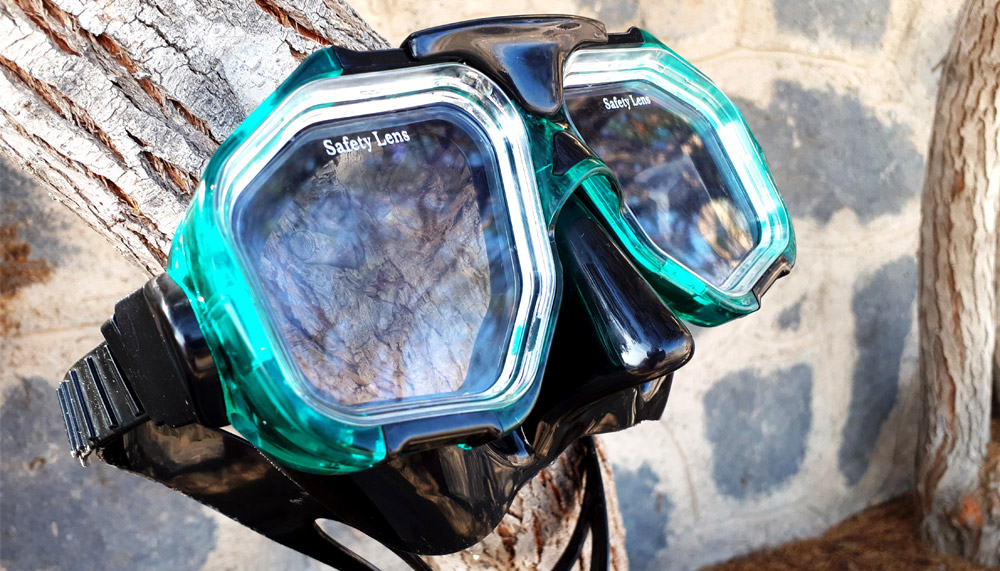
Exclusive ultralight mask with two lenses. Low volume mask suitable for most faces. Rugged frame with optical lenses. Has an ultralight polymer frame and comfortable skirt made of high-quality silicone. The side buckles rotate 45 degrees, are sturdy, and are easy to adjust.
TUSA Imprex 3D Hyperdry Mask
The Imprex 3D Hyperdry mask features TUSA’s patented Hyperdry system which allows the mask to be easily and seriously cleaned with a single exhalation. Additionally, the Imprex 3D Hyperdry includes TUSA’s patented rounded-edge skirt for greater comfort and convenience. Cleaning a mask has never been easier thanks to TUSA’s patented Hyperdry System. Simply breathe out through your nose and any water that has accumulated in your mask is forced out through a one-way purge valve. Once the mask is clear, the valve seals automatically close. The design of the mask provides a small internal volume. The mask has a wide split strap with easily adjustable buckles.
Omer Spearfishing Mask

The mask was designed and developed as a tool for deep-sea hunting and freediving. It has an internal volume of 110 cm3. This makes it one of the smallest masks on the market. Thanks to the use of pure silicone, excellent sealing has been achieved. The nasal area is characterized by a roughened texture that is designed to improve grip when aligned. In order to obtain a good field of view despite the small size of the mask, the exact distance between the lenses and their geometry has been studied. The strap ensures that the mask always fits the face, even when the diver’s ascent rate increases.
My Snorkel Tubes: Snorkel Types and Features to Consider
When choosing a snorkel for spearfishing, there are several types and features to consider. A basic J-shaped snorkel is a simple and affordable option, but it lacks features like a purge valve and splash guard. A dry snorkel, on the other hand, has a built-in valve that prevents water from entering the snorkel while you’re submerged, making it more suitable for spearfishing. Additionally, some spearfishers prefer a flexible snorkel that can bend out of the way when aiming and shooting. Ultimately, the best snorkel for spearfishing depends on your personal preferences and budget.
I prefer tubes with top and bottom valves, with water protection during big waves, soft mouthpiece, with rotating movable bracket, have the ability to simply attach to the mask, made of seawater resistant plastic.
Cressi Adult Diving Dry Snorkel

The Supernova Dry snorkel has a unique Splash Guard on the end that greatly reduces water ingress during surface use. The float mechanism instantly closes to prevent water from getting inside the snorkel. The snorkel has a very flexible tube that reduces jaw fatigue and folds up compactly for storage.
The wider elliptical shape of the orifice increases airflow capacity for more comfortable breathing, and the purge valve provides instant clearing. The mouthpiece is made of quality silicone, Supernova Dry is designed in Italy by Cressi. The interchangeable angled mouthpiece and the corrugated tubing are made of hypoallergenic silicone for comfort and functionality. The quick-release tube holder and ergonomic shape make this tube great.
Mares Ergo Dry Snorkel Lime Black
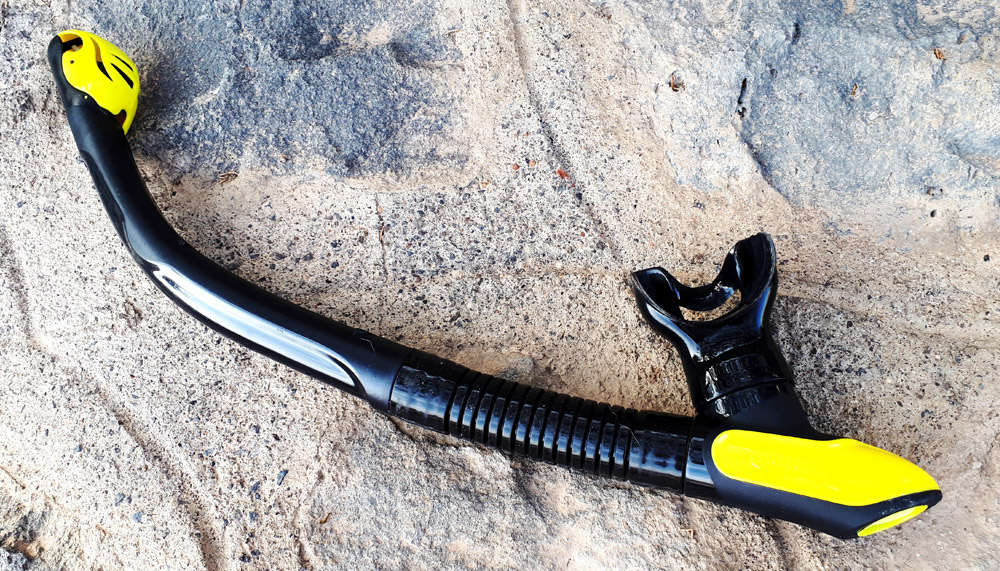
The Ergo Dry from Mares is designed for maximum performance and a completely dry breathing environment. The mouthpiece is made of soft rubber for greater impact resistance and water resistance, and the mouthpiece has a release valve for quick blowing. The bottom flexible tube is made of corrugated silicone for easy breathing and fits perfectly on the side of the face for superior comfort.
Omer Slalom Snorkel
Perfectly fits the head and increases hydrodynamics. The protruding parts have been reduced to facilitate movement in caves, without the risk of tying the tube to rocks. The geometry of the slalom is designed to reduce water ingress to the surface even in rough sea conditions.
My Snorkeling Fins
Dive fins play a crucial role in spearfishing by enabling divers to move efficiently and effectively through the water. The primary function of dive fins is to generate propulsion by creating a powerful downward thrust with each kick. In this review, we will discuss the different types of dive fins and the essential features to consider when choosing the right fins for spearfishing.
💎Types of Dive Fins:
The two main types of dive fins are full-foot and open-heel. Full-foot fins are designed to fit snugly around the foot and are worn barefoot. They are ideal for warm water and shallow dives as they provide less insulation and protection than open-heel fins. Open-heel fins, on the other hand, are designed to be worn with booties and have an adjustable strap that secures the foot in place. They are more versatile and suitable for all types of water temperatures and depths.
💎Features to Consider:
When choosing dive fins for spearfishing, there are three essential features to consider: stiffness, length, and material.
| Features | Explanation |
|---|---|
| Stiffness | The level of force required to flex the fin. A stiffer fin requires more effort to kick but generates more power. Softer fins are easier to kick but generate less power. The right level of stiffness depends on the diver’s strength, swimming style, and water conditions. |
| Length | The size of the fin affects the amount of thrust generated with each kick. Longer fins generate more power and are suitable for deep dives, currents, and rough water. Shorter fins are easier to maneuver and are suitable for shallow dives and calm water. |
| Material | The material affects the fin’s durability, weight, and flexibility. Plastic fins are affordable but less durable, rubber fins are more durable but heavier, and carbon fiber fins are the most expensive but lightest and most flexible. |
Requirements for fins: sporty design, strong and durable material, quick release when removed, easy attachment to the boot, smooth sole, shape for quick swimming in the ocean.
Mares Excite Pro Fins
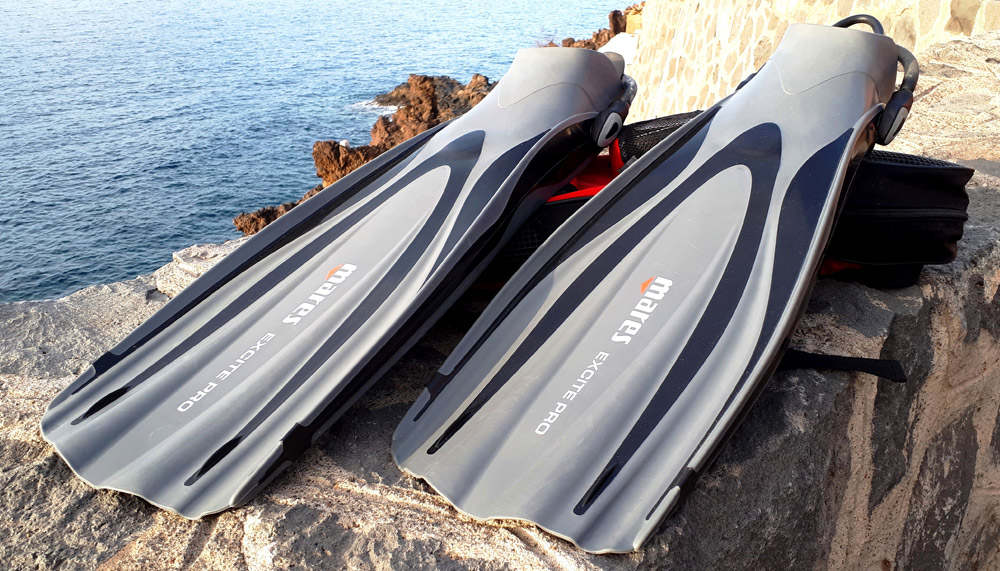
My basic fins. Easy to take off – put on. Allows you to swim and move around confidently in strong waves. A little heavy, but worth it. The Excite Pro diving fins have an open foot pocket and a rigid blade. Made of innovative, high-performance materials, they provide superior traction and are made of two materials. Maximum traction expression in the channel for Mares newest product, the minimum force for optimal traction at all times.
Lixada Scuba Diving Flippers
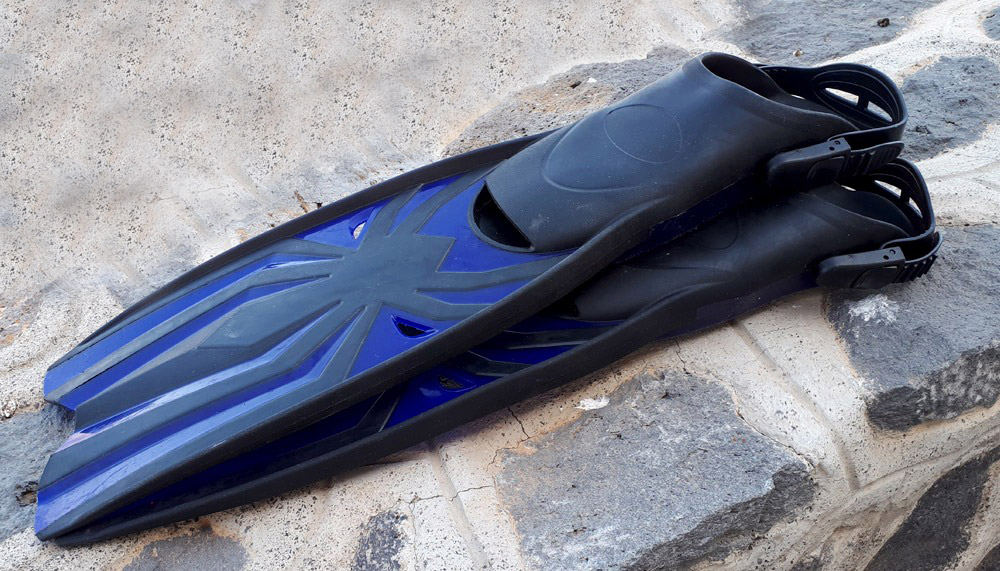
Budget flippers for beginners. Recommended for both travel and regular use. Adjustable long fins for swimming and diving. You can swim in socks or boots. This pair of comfortable swim fins will help develop leg strength and increase confidence in the water. Made of TPR material, soft and durable. An anti-slip design on the bottom of the fins can protect you from slipping and falling. Includes a mesh bag for easy carrying.
LIXADA Whale Small Short Snorkel Fins
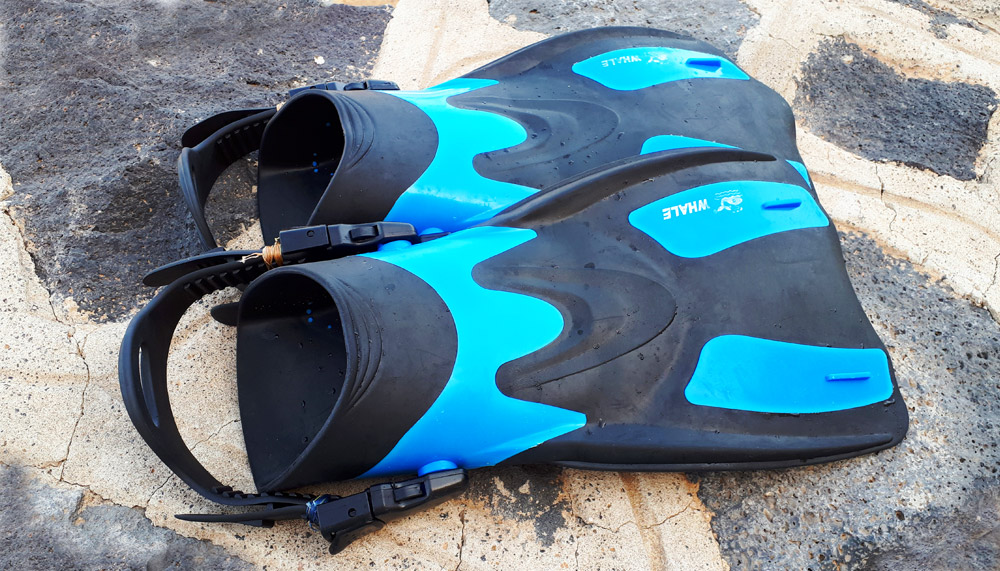
Whale small short fins for snorkeling and scuba diving. Diving fins with the adjustable heel. Stylish adjustable heel increases comfort. If the ocean is calm and there are no high waves, these fins are ideal for hunting. Takes up little space. The fins are the perfect combination of style and functionality.
Technisub Fins Model Caravel Blue Color
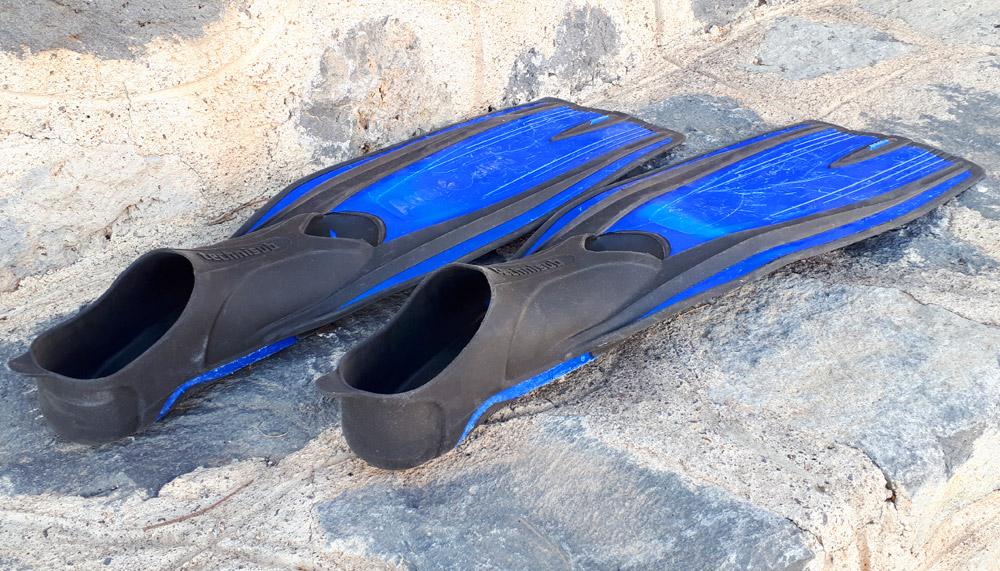
Standard and easiest flippers for beginners. Comfortable. Easy to put on and take off underwater. Durable and allow any level of the angler to hunt.
My Diving Knives: A Comprehensive Review for Safety and Practical Use
A dive knife is an essential tool for every diver as it serves multiple functions, from cutting through fishing lines to assisting in emergency situations. In this review, we will discuss the importance of a dive knife, the different types of dive knives, their features, and recommendations for reliable and versatile dive knives.
A spearfishing knife is the most important element of a swimmer’s safety. You can accidentally get entangled in pieces of fishing net, old fishing line, and rope in the water, and various situations are also possible during the hunt (getting entangled in your own line connecting the arrow and the gun).
The knife is also necessary for putting the caught huge fish to sleep before attaching it to the hook. The main requirements: are sturdy, easy to attach to the hunter’s body, protection from corrosion, sharp sharpness of the blade, and must have a scallop saw. Knives are also needed to cut the fish into fillets and pieces for frying.
💎Importance of a Dive Knife:
A dive knife is a crucial tool for safety during dives. It can be used to cut through entangling fishing lines, free oneself from seaweed or other obstacles, and assist in emergency situations, such as freeing a tangled or stuck fellow diver or cutting through a net or rope in an emergency situation. It is also useful for practical purposes, such as opening and closing diving equipment or collecting specimens. A dive knife should always be carried by a diver to ensure safety during a dive.
💎Different Types of Dive Knives and Their Features:
There are different types of dive knives available in the market, and each has unique features that make them suitable for specific diving purposes.
- Blunt Tip Dive Knife: A blunt tip dive knife is ideal for novice divers as it prevents accidental punctures while in use. It is also useful for activities such as prying open containers or cutting through tough materials.
- Pointed-Tip Dive Knife: A pointed-tip dive knife is ideal for experienced divers as it can puncture and cut through materials easily. It is also useful for activities such as spearfishing and self-defense.
- Foldable Dive Knife: A foldable dive knife is convenient as it can be stored compactly when not in use. It is also useful for activities such as trimming lines or cutting through materials in tight spaces.
- Line Cutter Dive Knife: A line cutter dive knife is specifically designed to cut through fishing lines and ropes with ease. It is also useful for activities such as freeing oneself or others from entanglement.
💎Recommendations for Reliable and Versatile Dive Knives:
When selecting a dive knife, it is essential to choose one that is reliable and versatile. The following are some recommendations for dive knives that meet these criteria:
- Cressi Skorpion Dive Knife: This knife has a sharp blade and a blunt tip, making it suitable for a wide range of diving activities. It is also compact and easy to store.
- Spyderco Salt 2 Dive Knife: This knife is rust-resistant, making it ideal for saltwater diving. It also has a serrated edge, making it useful for cutting through tough materials.
- Tusa FK-940 Dive Knife: This knife has a line cutter and a serrated edge, making it ideal for cutting through fishing lines and ropes. It also has a secure locking mechanism to prevent accidental opening.
Seac Sub Knife – Your Essential Diving Companion
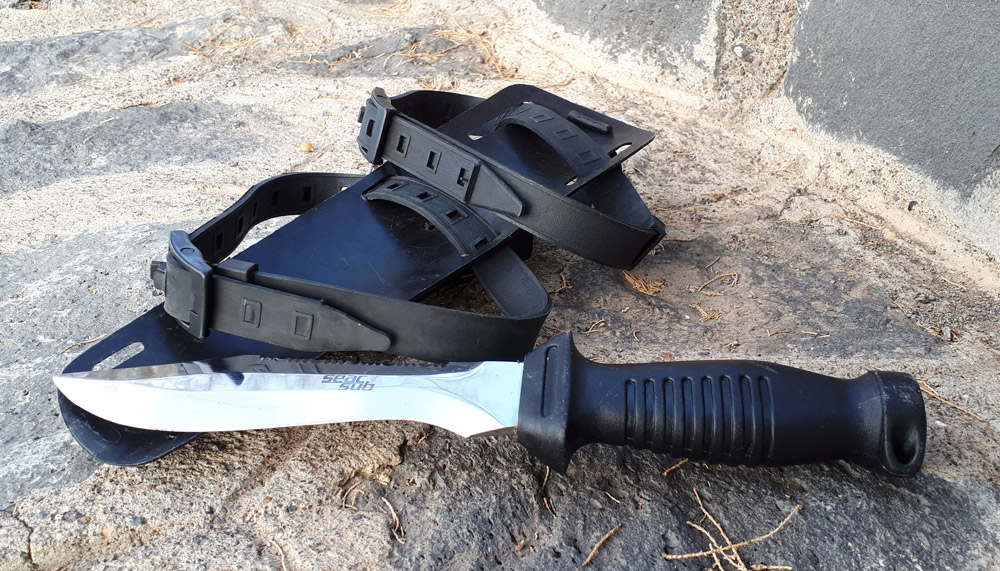
Introducing the Seac Sub Knife, an essential diving companion designed to cater to all your underwater cutting needs. With its compact design and premium quality materials, this dive knife is a must-have for both professional and recreational divers.
| Key Feature | Explanation |
|---|---|
| High-Quality Stainless Steel Blade | 4.5-inch premium-grade stainless steel blade ensures durability and corrosion resistance in saltwater environments. |
| Versatile Cutting Edge | Dual-edge blade design with sharp straight edge for clean cuts and serrated edge for handling tough materials. |
| Ergonomic Grip Handle | Designed for comfortable and secure grip, easy to maneuver even with wet hands or while wearing gloves. |
| Easy Locking Mechanism | Secure mechanism that keeps the blade in place during use, preventing accidental folding or deployment. |
| Quick Release Sheath | Durable, impact-resistant sheath with quick-release design for easy access to the knife. |
| Adjustable Leg Straps | Customizable straps for a secure fit on leg or arm, ensuring easy accessibility during dives. |
| Multi-Purpose Dive Tool | Versatile knife suitable for various underwater tasks, including spearfishing, exploration, and emergencies. |
| Compact & Lightweight | Designed for minimal weight and size, making it an ideal addition to your dive gear collection. |
💎Don’t leave the surface without the Seac Sub Knife, a reliable and versatile cutting tool that’s designed to withstand harsh underwater environments. Whether you’re a professional diver or a weekend warrior, the Seac Sub Knife is the ultimate dive companion that you can rely on. Order yours today and experience the difference!
Promate Dive Knife KF210P Titanium
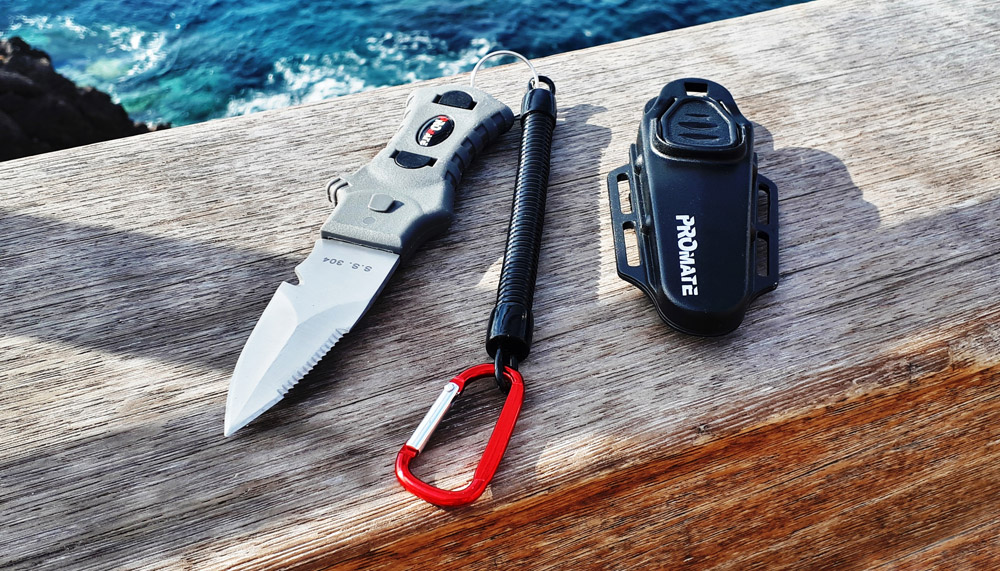
Fiskars Universal Utility Knife K40
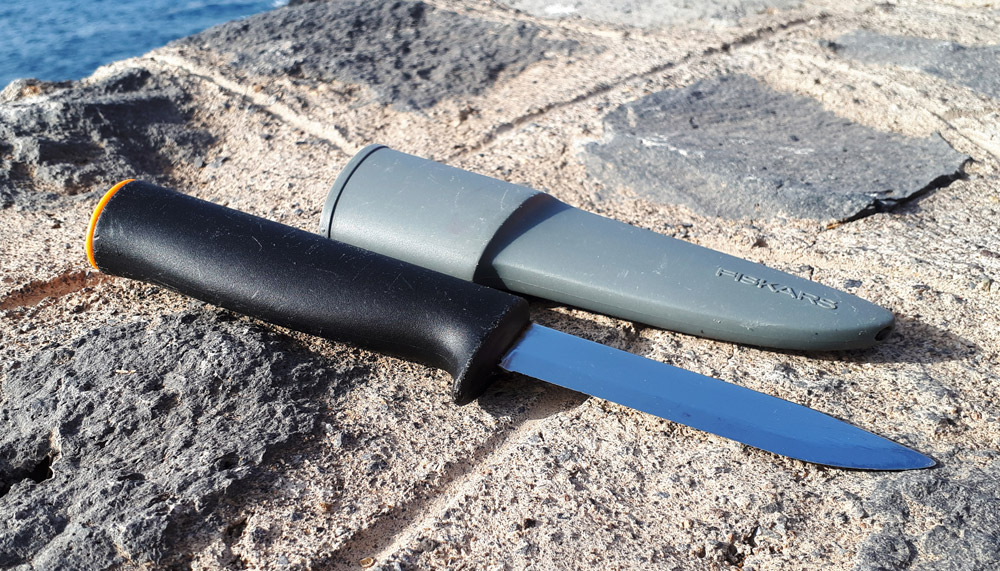
Fillet Knife
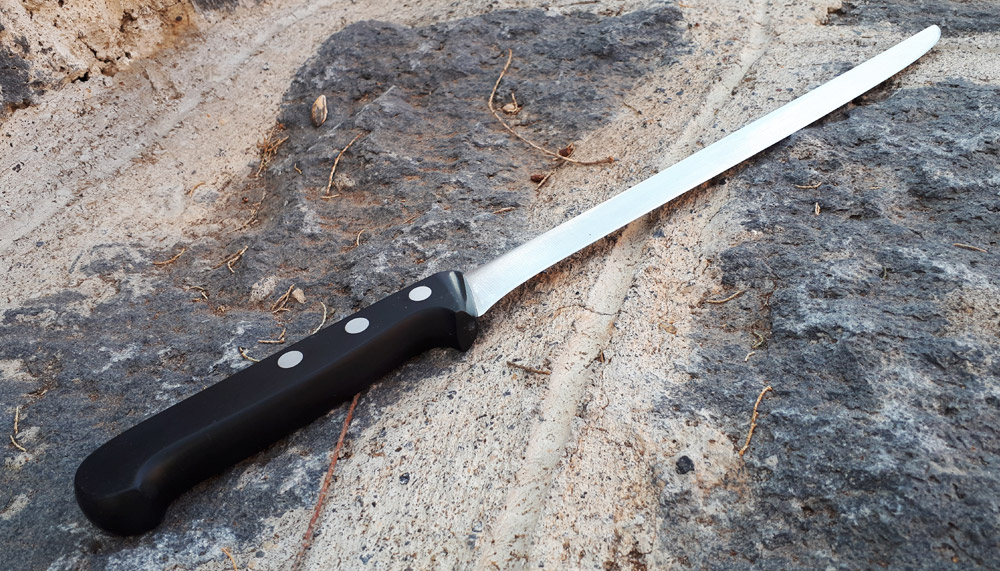
Fishing Utility Knife
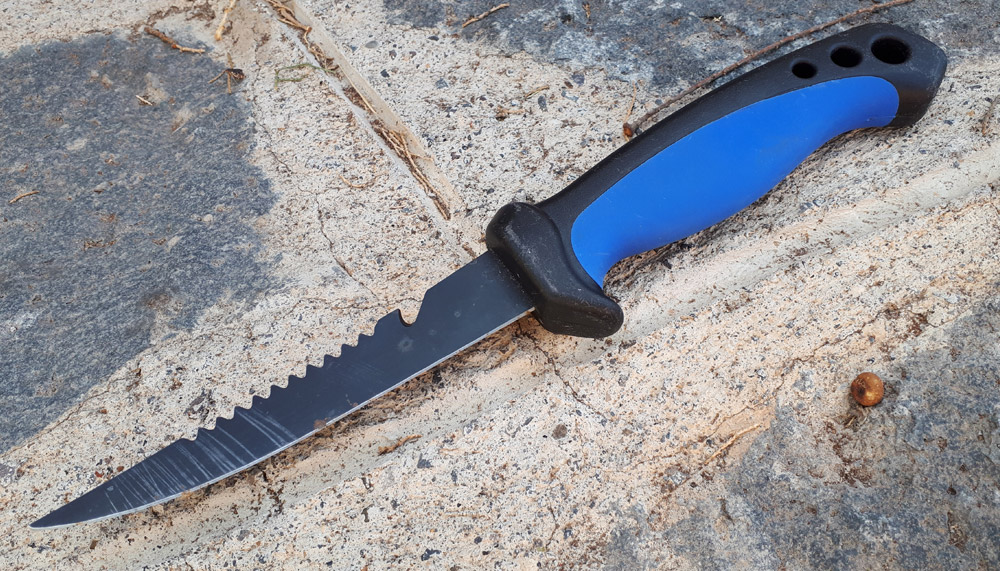
Crimping Fishing Line Tool
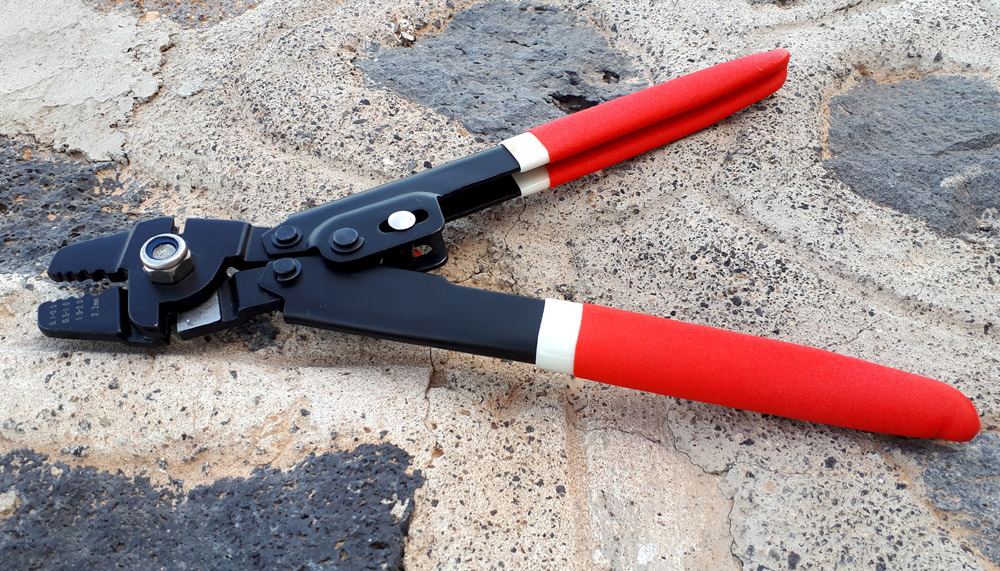
When the time comes to change the cord that binds the spear and gun, this tool will be required. It instantly crimps the bushings to the desired diameter, making the whole job easier.
My Snorkeling Belts: Weight Belts for Achieving Neutral Buoyancy and Ensuring Safety
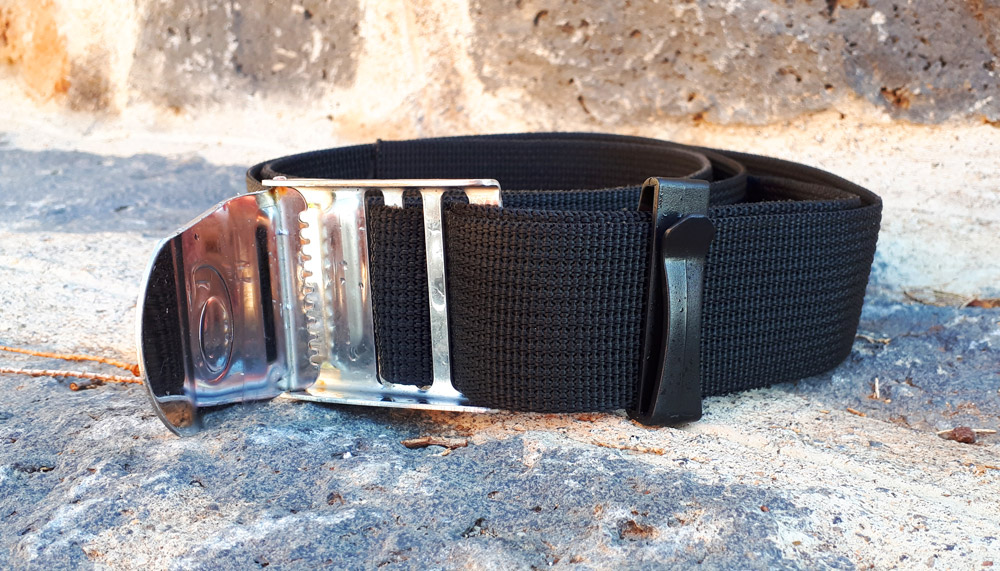
A weight belt is an essential piece of scuba diving equipment that helps divers achieve neutral buoyancy, enhancing their underwater experience and safety. This review will discuss the purpose of a weight belt in achieving neutral buoyancy, the types of weight belts and weight systems available, and proper weighting and safety considerations for an enjoyable and secure dive.
💎Purpose of a Weight Belt in Achieving Neutral Buoyancy:
| Aspect | Explanation |
|---|---|
| Balancing Buoyancy Forces | A weight belt counteracts the buoyancy forces exerted by a diver’s body, wetsuit, and other equipment. Adding weight helps a diver achieve neutral buoyancy, allowing them to hover effortlessly at any depth without sinking or floating upwards. |
| Enhancing Dive Experience | Neutral buoyancy enables divers to move smoothly underwater, conserve energy, and maintain a stable position. This enhances the overall dive experience and minimizes disturbance to marine life. |
| Safety | Proper weighting is crucial for a diver’s safety, as being overweighted can result in difficulty returning to the surface, while being underweighted can cause an uncontrolled ascent, both posing significant risks. |
💎Types of Weight Belts and Weight Systems:
| Type of Weight System | Explanation |
|---|---|
| Traditional Weight Belt | A nylon or webbing belt with a quick-release buckle, designed to hold individual weights or weight pouches. Weights can be adjusted and distributed evenly around the waist to achieve the desired buoyancy. |
| Pocket Weight Belt | Features built-in pockets that hold weights or weight pouches. Pocket weight belts offer a more comfortable and secure fit, as the weights are less likely to shift during a dive. |
| Integrated Weight System | Integrated into a buoyancy compensator (BC) and uses removable weight pockets, allowing for quick and easy weight adjustments. Integrated weight systems provide better weight distribution, reducing stress on a diver’s lower back. |
💎Proper Weighting and Safety Considerations:
| Aspect | Explanation |
|---|---|
| Determining Correct Weight | To determine the appropriate weight, perform a buoyancy check at the surface while wearing all equipment, including an empty tank. Inhale deeply and hold your breath; you should float at eye level. Exhale and you should begin to sink slowly. Adjust the weights accordingly. |
| Weight Distribution | Evenly distribute the weights around your body to avoid imbalance and ensure better control during a dive. Integrated weight systems or pocket weight belts can aid in achieving proper weight distribution. |
| Quick Release Mechanism | Ensure the weight belt or integrated weight system has a functional quick-release mechanism. This is crucial for emergencies, allowing the diver to drop their weights quickly in case of an uncontrolled ascent or entanglement. |
| Regular Equipment Checks | Regularly inspect your weight belt or weight system for signs of wear and tear, such as frayed webbing, cracked buckles, or damaged pockets. Replace any damaged parts immediately to avoid potential failures during a dive. |
The belt must fit the individual hunter’s waist size, plastic or stainless steel buckle, be quick-drying, durable, made of seawater-resistant material. Belt with buckle, developed by our teams for beginners divers. This 128 cm diving belt stands out for its length. Fits all physicists of divers and spearfishers.
My Socks and Boots for Spearfishing
It is desirable to buy diver’s boots from a well-known brand. This will guarantee the quality of the sole glue, the functionality of the zipper, a comfortable fit on the shin, there will be no allergies and excessive friction (blisters), the sole will have suction cups against slipping on the rocks, and the foot will not freeze in cold water.
Cressi Escarpines Lux 5 mm Diving Dry Boots
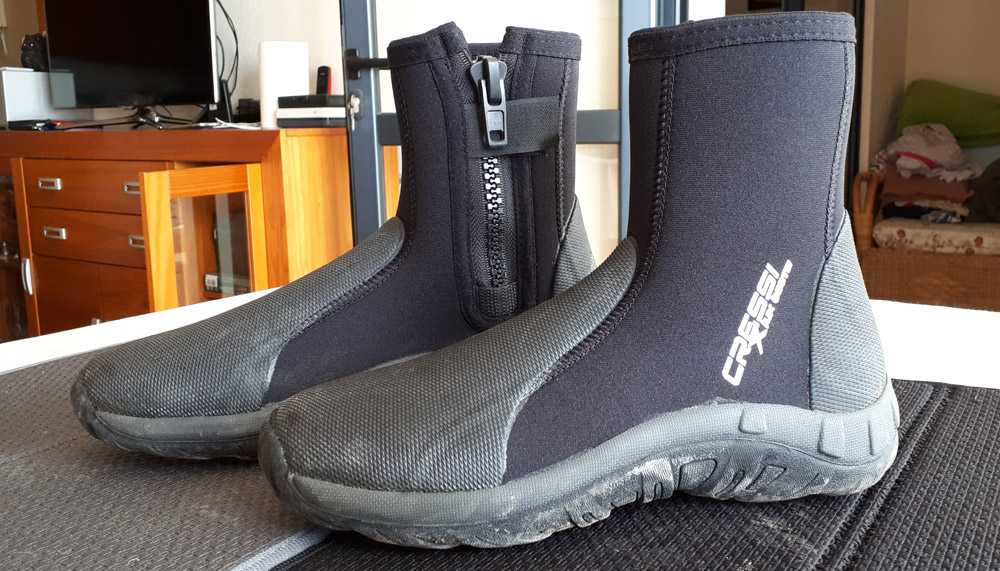
Extremely compression-resistant 5 mm thick neoprene. Waterproof insert at the top of the cuff and inside of the flap in smooth neoprene with good adhesion. Technopolymer zipper with the new metal runner, specially designed for marine use: it is more resistant to often neglected use than this small but vital detail. Velcro insert that prevents the zipper from being unzipped so often unwanted. Thick but very flexible inserts cover the entire step and heel. New, more flexible and snug-fitting reinforced outsole with rounded profiles so as not to require overly wide underfoot.
Fish Stringer Clip for Spearfishing
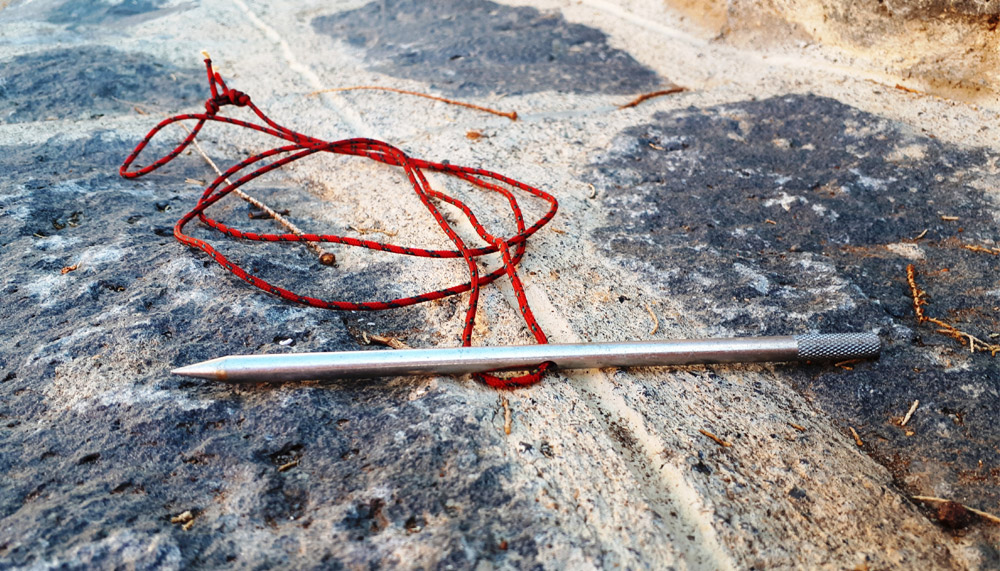
💎Fish Stringer:
- Purpose: A fish stringer is a tool used by spearfishers and underwater hunters to secure their catch during the dive, allowing for hands-free movement and a more streamlined dive experience.
- Materials and Designs: Fish stringers can be made from stainless steel, aluminum, or other corrosion-resistant materials and are available in various designs, such as looped cables or threaded rods with clips or spikes for securing the catch.
- Considerations: When choosing a fish stringer, consider factors such as ease of use, material durability, and attachment options to your dive belt or a buoyancy control device (BCD).
Caught fish can be held while swimming in a mesh bag (usually attached to a lifebuoy) or on a special clip (attached to the swimmer’s waist belt). Fish Stringer With Quick Clip is made of stainless steel wire. Easy to open for quick release of fish. Holds large and heavy fish very well. Ideal for all types of game fish and great for holding fish on a tether. To use this stringer, you need to push the pin through the gills of the fish and remove it from the mouth or directly through the eyes of your fish and pull it out from the other side.
Finding the Best Gloves and Booties for Ultimate Hand and Foot Protection
Hand and foot protection is crucial in various activities and industries, from gardening and construction work to watersports and winter activities. To ensure optimal protection and comfort, it is essential to choose the right gloves and booties. This review will discuss the significance of hand and foot protection, factors to consider when selecting gloves and booties and provide recommendations for durable and comfortable products.
💎Significance of Hand and Foot Protection:
- Injury Prevention: Hand and foot protection is vital for preventing injuries in hazardous environments. Appropriate gloves and booties can prevent cuts, burns, abrasions, punctures, and even chemical exposure. For example, gloves made from cut-resistant materials can protect workers in glass or metal handling industries, while insulated booties can shield feet from extreme cold.
- Enhanced Grip and Traction: Gloves and booties can improve grip and traction, reducing the likelihood of slips and falls in wet or slippery environments. This is particularly important for those working in construction, oil and gas industries, or participating in outdoor activities like hiking or watersports.
- Comfort and Warmth: Using gloves and booties can provide added comfort and warmth, ensuring a more enjoyable experience in cold weather or during long working hours.
💎Factors to Consider When Choosing Gloves and Booties:
- Material: The material of gloves and booties is essential, as it affects protection, durability, and comfort. For example, gloves made from leather or synthetic leather offer excellent durability and abrasion resistance, while neoprene gloves are suitable for wet environments due to their waterproof properties. When selecting booties, consider materials like neoprene for water activities and insulated materials like Thinsulate for cold environments.
- Thickness: Thickness is a critical factor in determining insulation and protection levels. Thicker gloves and booties provide more insulation and protection but may sacrifice dexterity and flexibility. Choose the thickness based on the intended use and personal preferences.
- Grip: Gloves and booties with a textured or rubberized grip are ideal for activities that require secure handling or walking on slippery surfaces. Look for products with strategically placed grip elements for the best performance.
💎Recommendations for Durable and Comfortable Gloves and Booties:
Gloves:
- Mechanix Wear – Material4X Original Gloves: These gloves are perfect for general work use, offering excellent durability and abrasion resistance due to the synthetic leather Material4X. They also feature a seamless palm for added comfort.
- Showa Atlas 300 Fit Palm Coating Gloves: These gloves are suitable for those working in wet environments, as the latex palm coating offers excellent grip and water resistance. The breathable back design ensures comfort during extended wear.
Booties:
- O’Neill Heat 3mm Split Toe Booties: Ideal for watersports enthusiasts, these booties provide a perfect balance between warmth, flexibility, and grip. The split-toe design and rubberized sole ensure excellent traction, while the 3mm neoprene offers sufficient insulation.
- Bogs Men’s Classic High Waterproof Insulated Rain Boot: These boots are perfect for cold and wet environments, featuring 7mm Neo-Tech waterproof insulation to keep feet warm and dry. The non-slip rubber outsole offers excellent traction, while the stretchy upper ensures a comfortable fit.
My Diving Gloves
Diving gloves should be thick, have slip protection, fit the size of the swimmer’s hand, and be quick-drying from the water. The thickness should be chosen depending on the temperature of the water. It is purely individual. I use thin gloves up to 3 mm, so as not to lose the sensitivity of the fingers.
Cressi Gloves Kevlar X Thermic 3mm

Gloves (Neoprene 90%, Nylon 10%) made of ultra-elastic material that dries quickly. They combine elasticity with resistance to erosion and the use of previous models. The outer Ultraspan fabric does not adhere to Velcro-like it does with similar fabrics. Inside, the innovative Nano Plush Carbon fabric is truly thermal, waterproof, and antibacterial. To increase stability, it was completely covered with polyurethane stains: palm, fingers, and back.
The pattern has taken into account important details such as the depth of the fingers, the perfect closure of the wrist, and the width of the palm. The quality of the workmanship and the gluing guarantees an excellent waterproofing of the glove, despite its reduced thickness.
Diving Gloves with Subea SCD Neoprene Bottle 2 mm

Developed by design teams for all divers looking for 2mm thin gloves. These 2mm neoprene dive gloves are perfect for maintaining dexterity when diving at halftime! Glove with Flatlock seams (the needle goes completely through the neoprene panel).
Multi-Flex Work Gloves
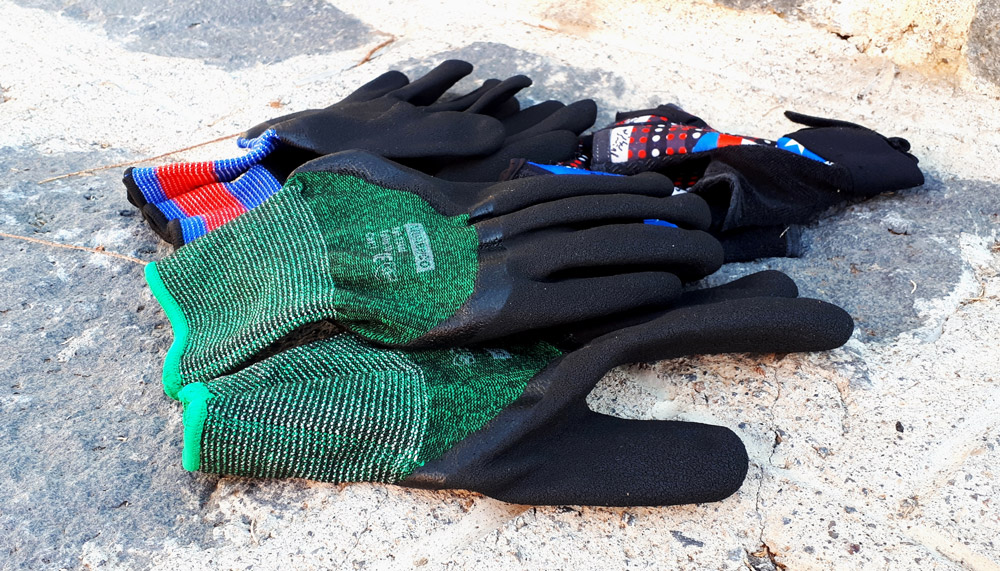
Sometimes you don’t have to buy expensive gloves. I often use ordinary work gloves with perforations. They are thin and hold the gun firmly, don’t slip, are durable and comfortable.
My Underwater Lights
💎Dive Torch or Flashlight:
- Purpose: A dive torch or flashlight is essential for illuminating underwater environments, particularly during night dives, wreck dives, or when exploring caves and crevices.
- Types and Features: Dive torches come in various designs, such as handheld or wrist-mounted, with different lumen outputs and beam angles. Many models are rechargeable and offer multiple brightness settings or emergency strobe functions.
- Considerations: Select a dive torch based on your diving needs, the torch’s brightness, battery life, durability, and ease of operation.
Night swimming is a super unforgettable adventure and fun. More often than not, the waves subside at night. The fish are less afraid and come to shore. Other fish fall asleep and become quiet. Many subspecies of fish come out of hiding and caves (e.g. grouper, sea bass, octopus, cuttlefish, squid, moray eel, catalufa, and other species). And here the flashlight is the most important element of the diver.
It should shine for a long time (from two hours), have different colors (white, yellow, red, and blue), be conveniently attached to the hand, be equipped with at least three lamps, not leak up to a depth of 50 meters. It is obligatory to have a spare (emergency flashlight) with you each time you dive. I additionally leave the third flashlight on the shore to illuminate the place of exit from the water. I direct it to a big rock or a mountain. This light is visible from far away. And it is easy to return to the familiar place.
BRETT XHP50 Diving Flashlight
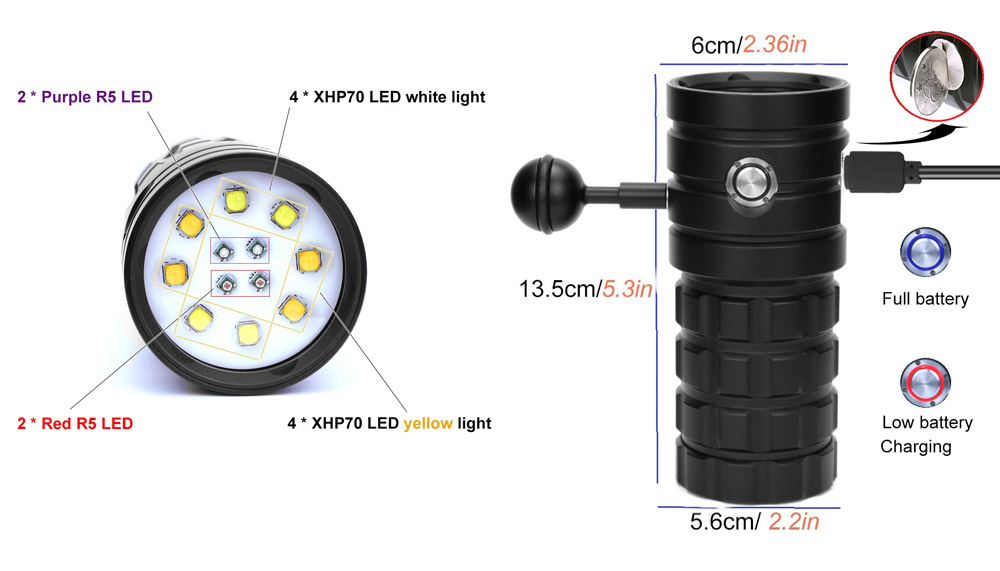
LED underwater diving flashlight, 100m, waterproof tactical flashlight, 8 XHP50/70, LED photographic studio light, video, photography light with red + UV. BRETT factory mainly produces diving lights and diving accessories. In order to give customers the best shopping experience, they provide a lifetime after-sales service to every customer. This flashlight can be used in water or on land. The flashlight comes with overheat protection. When the temperature is too high, the flashlight automatically switches the brightness or turns the flashlight off.
Note! Do not open the flashlight in your bag, it will burn your backpack. Use for diving, camping, fishing, climbing, night light, etc.
Features of this product:
- The latest waterproof design circuit and pressure aprons are used for all connections, so the aprons will be in close connection with the flashlight. The aprons are more stressed and have a better waterproofing effect. In our deep test, the flashlight can work normally under 100m of water.
- Smart Protection.
- The product has a temperature protection system. When the temperature is too high, the flashlight automatically adjusts the brightness to protect the flashlight from damage.
- Low voltage protection.
- When the battery voltage is lower than 3.2 V, the flashlight will automatically turn off.
LIGHTINGVIEW Ultra Bright Underwater Light Lantern LED
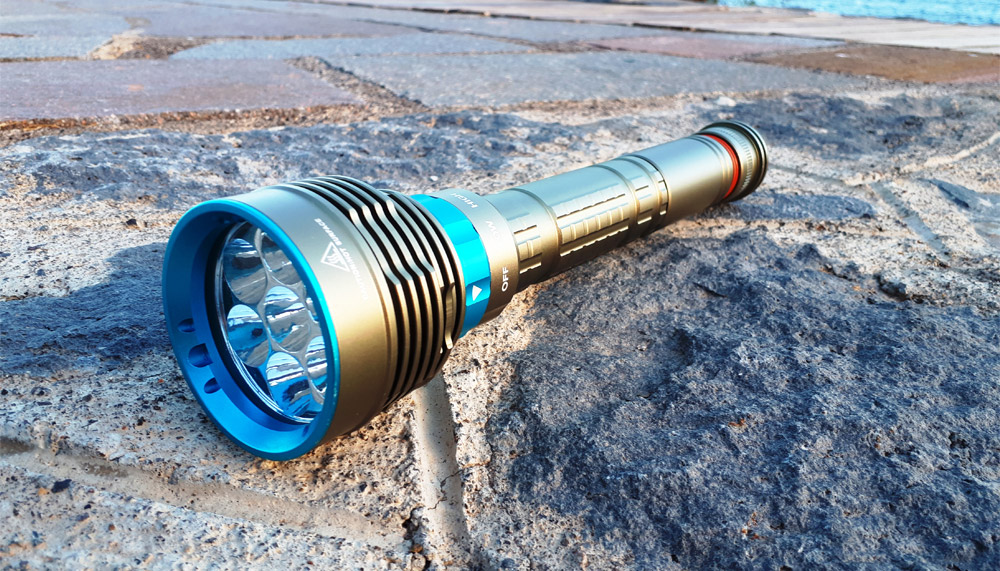
Sofirn SD05 Scuba Dive Flashlight Diving Light
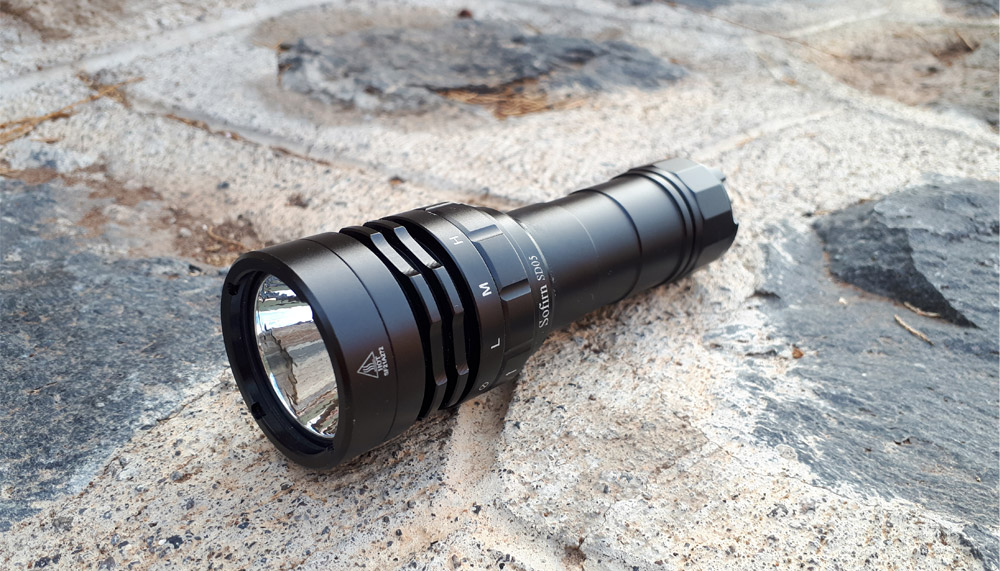
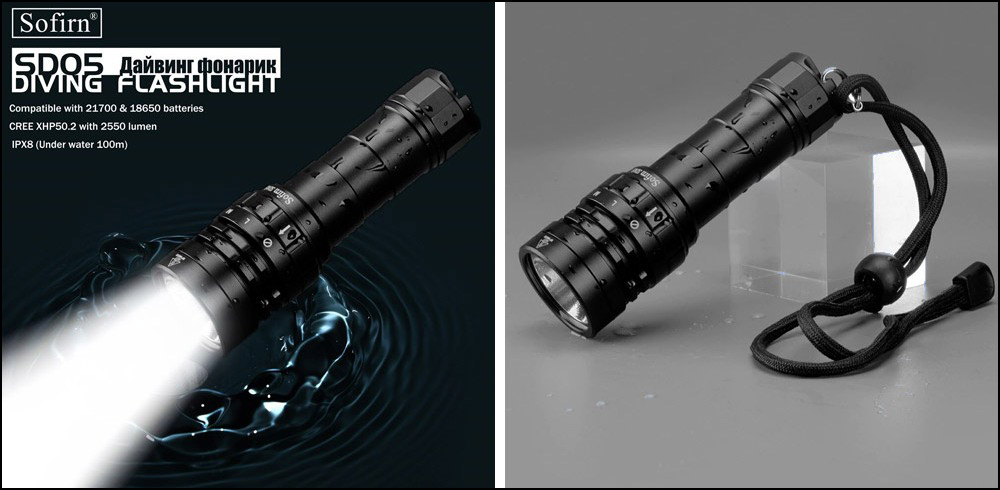
Sofirn New SD05 Scuba Dive LED Flashlight Diving Light Cree XHP50.2 Super Bright 3000lm 21700 Lamp with Magnetic Switch 3 Modes. Shockproof housing, hard light, illumination distance 200-500 meters, waterproof up to 100 meters, battery support 21700 and 18650. Reliable and easy to work with. Easy on the hand. I often use it as my main flashlight for night diving.
Shustar S-245 LED Diving Flashlight
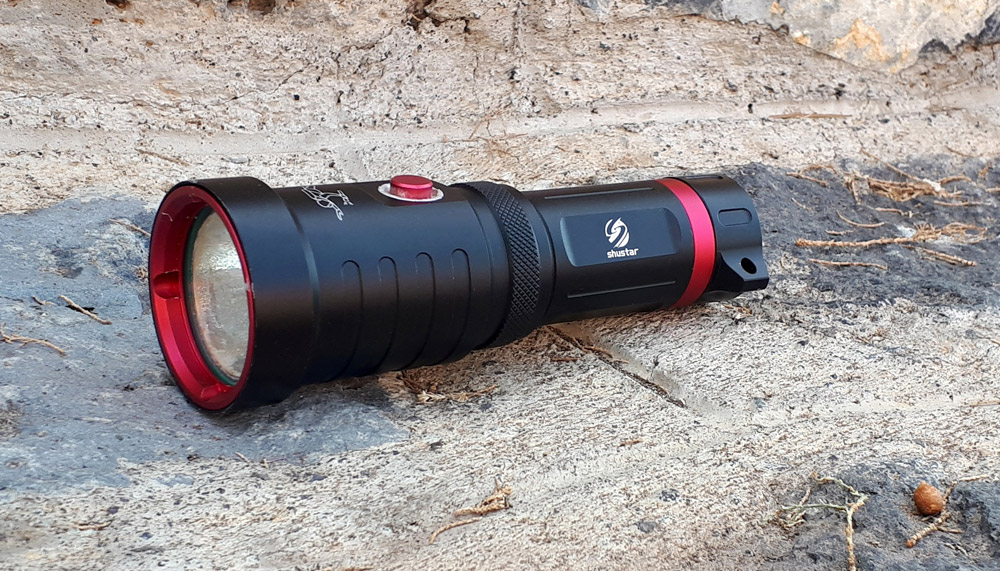
Shustar S-245 LED Diving Flashlight Super Bright P70.2 Torch Professional IPX8 Dive Lamp 150M Underwater Lantern Waterproof 26650/18650 Light
Cressi Linterna Frogman 24000
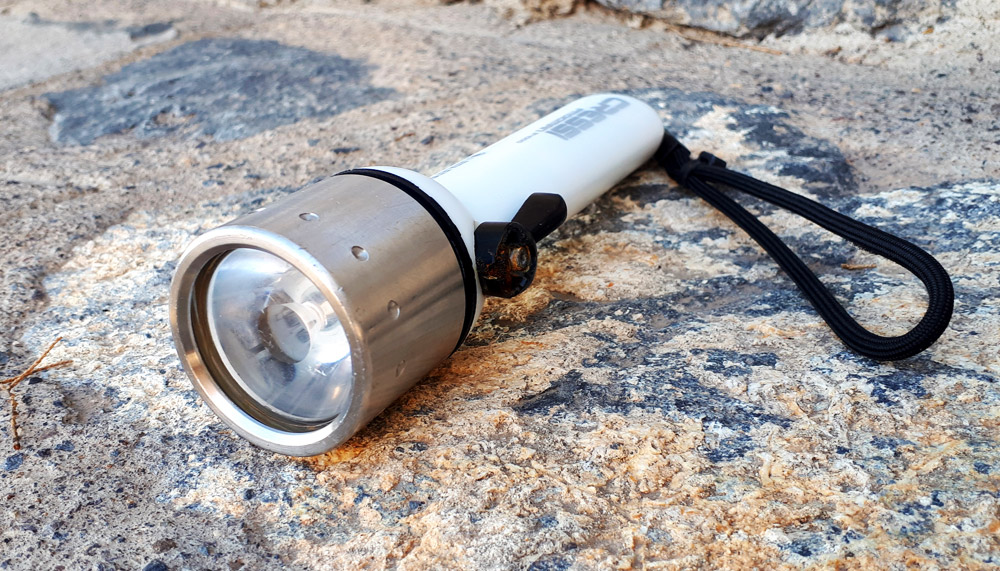
This highly successful model has earned an excellent reputation for its excellent ratio of size, performance, and reliability. Its technology allows it to retain its benefits for long periods of autonomous operation in an amazing way. Its size and beam type make it very versatile for diving, underwater fishing, or sailing in general. The combination of reinforced nylon with a stainless steel head radically differentiates it aesthetically and in terms of workmanship from other similar products. Moreover, the Frogman 24000’s efficient power management gives it a range of 3 hours in continuous mode and up to 15 hours in intermittent mode. The rotary magnetic switch isolates water from its components to increase its durability and efficiency. The elastic strap can be attached to your wrist and can withstand up to 20kg of tension before breaking.
Flashlight for Diving Shustar S-108
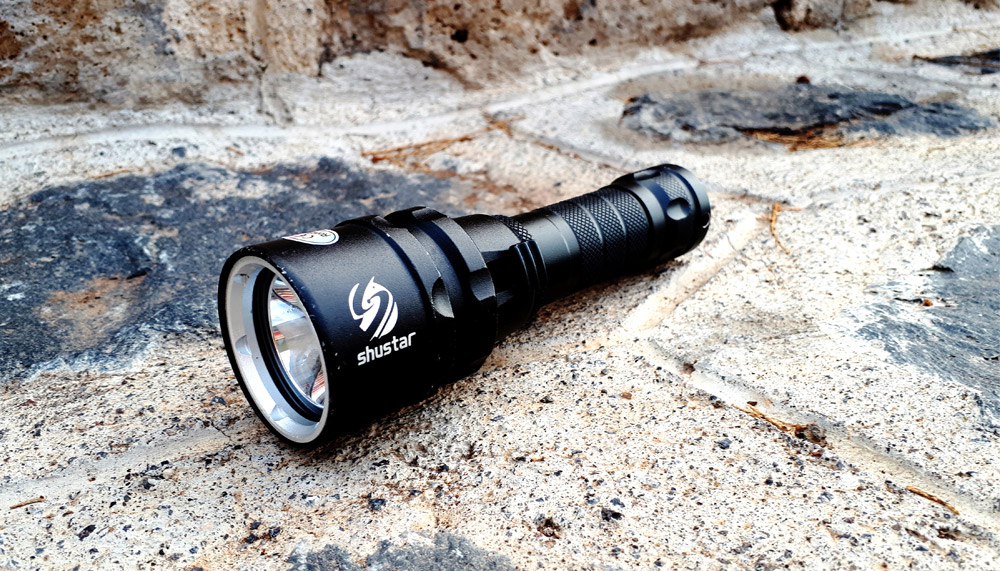
The flashlight has only one lighting mode. And this is a plus. A good option for a second light source as a backup light source (for backup) in case of failure of the main flashlight. Very long battery life, which allows you to shine for up to 2 hours. Has a bright LED light that emits a super-bright spotlight while diving and fishing. The neutral white light helps you observe your target from up to 100 meters away. Easy to use: press the side magnet switch to turn it on. Made of a compact 6061 aluminum alloy body, tempered glass lens. Shockproof.
Dive Floats and Float Lines for Enhanced Safety and Location Marking
Dive floats and float lines play a crucial role in ensuring diver safety and marking their location during dives. This review will discuss the importance of dive floats for safety and location marking, explore different types of dive floats and their features, and provide considerations for float lines, including length, material, and attachment options.
💎Importance of Dive Floats for Safety and Marking Your Location:
Surface Visibility: Dive floats enhance diver safety by increasing surface visibility, alerting boat traffic and other water users to the presence of divers below. This significantly reduces the risk of accidents or collisions.
Location Marking: Dive floats mark a diver’s location, helping them find their entry/exit point, especially in challenging conditions or unfamiliar areas. It also enables dive buddies or surface support teams to monitor and track a diver’s progress.
Emergency Support: In case of an emergency, a dive float can serve as a visual signal for help or as a flotation device to support an injured or fatigued diver.
💎Different Types of Dive Floats and Their Features:
Inflatable Dive Floats: These lightweight and portable floats can be inflated and deflated as needed, making them ideal for traveling divers. Some models include features such as dive flag holders, attachment points for gear, and built-in dry compartments for storing small items.
Hardshell Dive Floats: Made from rigid materials like foam or plastic, hardshell dive floats are more durable and buoyant than inflatable floats. They often include additional features like handles, dive flag holders, and attachment points for gear or float lines.
Surface Marker Buoys (SMBs): These buoyant devices are used by divers to signal their location at the surface. SMBs are typically inflated using the diver’s regulator and are connected to the diver with a reel or float line. They are particularly useful for drift diving, decompression stops, or emergency situations.
💎Float Line Considerations: Length, Material, and Attachment Options:
Length: The appropriate length of a float line depends on factors such as water depth, dive type, and local conditions. Longer lines provide more freedom to explore, while shorter lines are suitable for shallow dives or when staying close to the float is necessary.
Material: Float lines are typically made from materials like nylon, polypropylene, or braided cord, offering varying levels of strength, durability, and resistance to abrasion. Consider the type of diving and environmental factors when selecting the material for your float line.
Attachment Options: Attachment points on dive floats may include D-rings, clips, or webbing loops, allowing for secure and easy attachment of float lines, reels, or other gear. Some float lines also have swivels or quick-release mechanisms to prevent tangles and ensure easy deployment or retrieval.
Additional Gear and Accessories for a Safe and Enjoyable Diving Experience
Beyond essential scuba diving equipment, there is a range of additional gear and accessories that can enhance safety and enjoyment during underwater adventures. This review will discuss the following items:
💎Spearfishing Bag or Mesh Catch Bag:
- Purpose: Spearfishing bags and mesh catch bags provide a convenient way to carry and store your catch during a dive.
- Types and Features: Spearfishing bags come in various materials, such as nylon or vinyl-coated mesh, which allow water to drain while keeping the catch secure. Some bags also feature drawstring closures, reinforced handles, or attachment points for easy carrying and accessibility.
- Considerations: Choose a bag based on the size and type of catch, durability, and attachment options to your dive gear.
💎Dive Watch or Computer:
- Purpose: Dive watches and computers help divers monitor critical information, such as dive time, depth, water temperature, and decompression stops, ensuring a safe and enjoyable diving experience.
- Types and Features: Dive computers come in various formats, such as wrist-mounted, console-mounted, or integrated into a BCD. They can include features like air integration, digital compasses, or Bluetooth connectivity for syncing dive data with a smartphone or computer.
- Considerations: Choose a dive watch or computer based on your diving experience, budget, and the specific features you require for your diving adventures.
💎Safety Equipment: Surface Signaling Device, Audible Signal, and Reflective Surface:
- Surface Signaling Device: Devices such as surface marker buoys (SMBs) or inflatable signal tubes are essential for indicating your location to boats and other divers, ensuring your safety at the surface.
- Audible Signal: An audible signal device, such as a whistle or air horn, can help alert others to your presence or signal for assistance in case of an emergency.
- Reflective Surface: A reflective surface, such as a signal mirror or reflective tape, can be used to signal for help or make your location more visible to rescue teams during daylight hours.
Tips for Choosing and Maintaining Dive Gear for a Safe and Enjoyable Experience
Selecting and maintaining the right dive gear is crucial for a safe and enjoyable diving experience. This review will provide essential tips for choosing and maintaining your dive equipment, including considerations for buying vs. renting, the importance of proper fit and comfort, and basic maintenance and storage tips.
Buying vs. Renting Gear
- Buying Gear: Owning your dive gear has several advantages, such as ensuring the proper fit, familiarity with equipment, and the ability to customize your gear for personal preferences. Buying gear is a long-term investment and can be more cost-effective if you plan to dive frequently.
- Renting Gear: Renting equipment may be a suitable option for occasional divers, beginners, or travelers who want to avoid the hassle of transporting bulky gear. Renting allows you to try different types and brands before committing to a purchase, but you may not always find the perfect fit or the latest models.
- Considerations: Weigh the benefits and drawbacks of buying and renting based on your diving frequency, budget, and travel plans.
Importance of Proper Fit and Comfort
- Safety and Functionality: Properly fitting gear is essential for both safety and functionality. Ill-fitting equipment can cause discomfort, limit your movement, or even lead to dangerous situations, such as a leaking mask or an ill-fitting BCD.
- Trying Before Buying: Whenever possible, try on gear before purchasing or renting to ensure the best fit. Consult with dive professionals or experienced divers for advice on selecting the right gear for your body type and dive needs.
Basic Gear Maintenance and Storage Tips
| Maintenance Aspect | Explanation |
|---|---|
| Cleaning | Rinse gear with fresh water after each dive to remove salt, sand, and debris. Some gear may require specialized cleaning solutions. Focus on moving parts like buckles, zippers, and valves. |
| Inspection | Regularly check gear for signs of wear and tear, such as frayed straps, cracked buckles, or damaged seals. Address issues immediately to prevent equipment failure during a dive. |
| Storage | Store gear in a cool, dry, well-ventilated area away from direct sunlight and heat sources. Hang wetsuits, BCDs, and buoyant gear to prevent creasing. Keep sensitive equipment in protective cases. |
| Servicing | Follow manufacturer guidelines for regular servicing, especially for regulators and dive computers. Authorized service centers can inspect, repair, and replace parts for optimal performance and safety. |
FAQ
Conclusions: Must-Have Spearfishing Equipment for Beginners
To begin your spearfishing journey, it is essential to invest in the right gear, such as a quality speargun or pole spear, an appropriate wetsuit, gloves, booties, a weight belt, a dive mask, a snorkel, and fins. Additional accessories like a fish stringer, catch bag, dive torch, and safety equipment can further enhance your underwater experience.
Quality gear not only ensures a safe and enjoyable diving experience but also has a longer lifespan, providing better value for money. Prioritize proper fit, functionality, and durability when selecting your gear, and consider consulting experienced divers or dive professionals for guidance.
Spearfishing is an exciting and rewarding activity that combines the thrill of the hunt with the beauty of the underwater world. To ensure a safe and enjoyable start, invest in the right gear, learn from experienced spearfishers, and practice responsible spearfishing practices. As you grow in experience, you can explore new locations and challenges, making spearfishing a lifelong passion.
Use the equipment you prefer and are more comfortable swimming in. Personal preference is the main thing to enjoy hunting. Widely known brands always observe constant quality, use modern technology and environmentally friendly materials, and are safe to hunt with.

I live in Tenerife (Canary Islands) for the last 10+ years and share my daily fishing experiences on my website. Many years of personal experience as a fisherman and the vast experience of my friends allow me to write professionally on any fishing topics (from choosing a flashlight and equipment to deep-sea fishing).
All of my advice is based on practical real-world experience and will be useful to both novice anglers and professionals. Read more about the author.
Affiliate Disclosure: FishReeler.org sometimes gets paid for listings, through sponsors or affiliate programs like Amazon, Ebay, Cabelas, Bass Pro Shop, Shimano, Daiwa, Rapala, Renn, Okuma, KastKing, etс. Clicking a link helps keep FishReeler.org free, at no extra cost to you!
About the author: Each article is verified by the fishing expert Sergio Smirnoff. The articles are written by professional and amateur fishermen with 20+ years of fishing experience.
Note: The views and opinions expressed in this article are those of the authors and do not necessarily reflect the official policy or position of any agency. The articles are for informational purposes only, share your opinions in the comments and join the fishing discussions, let's share our fishing experiences together!


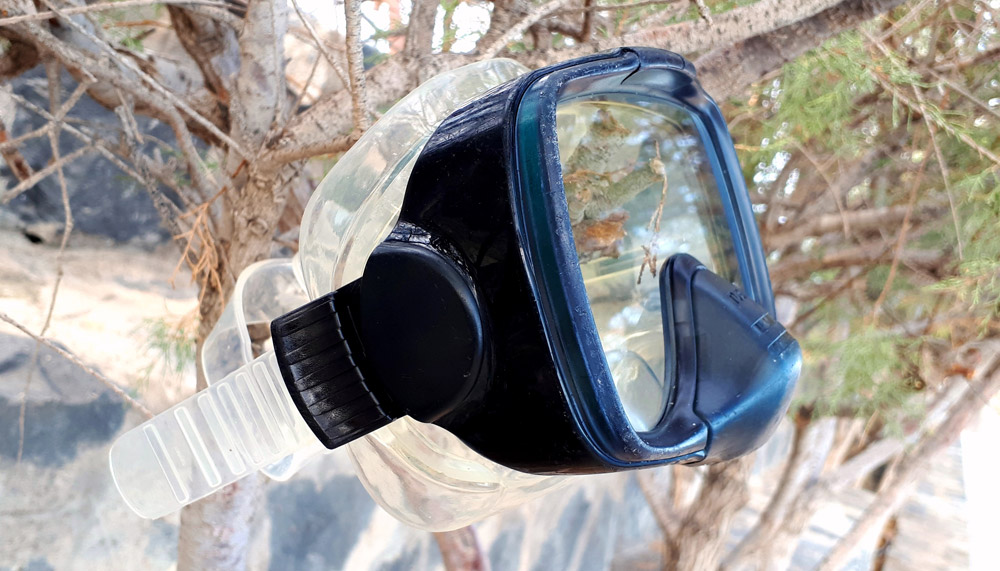

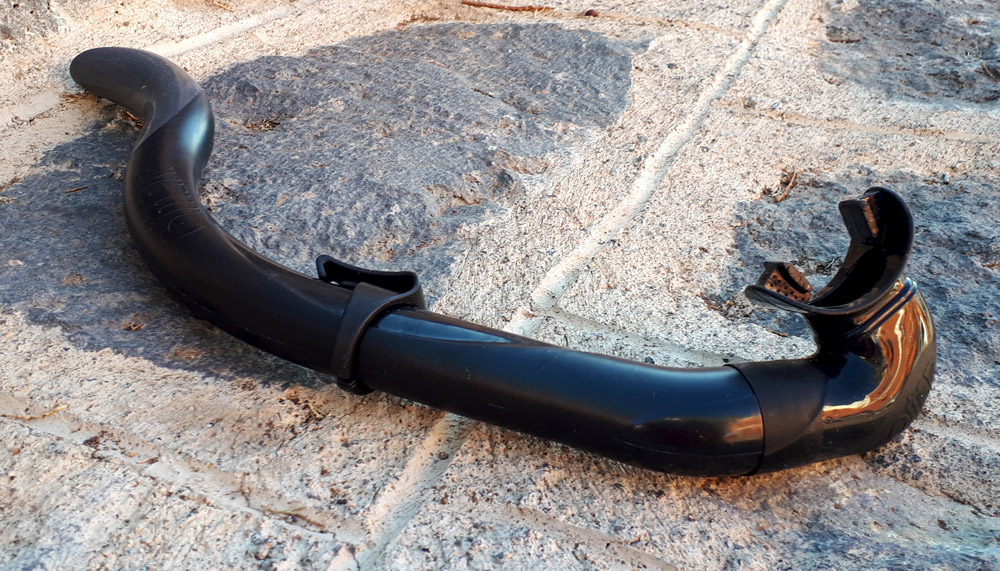

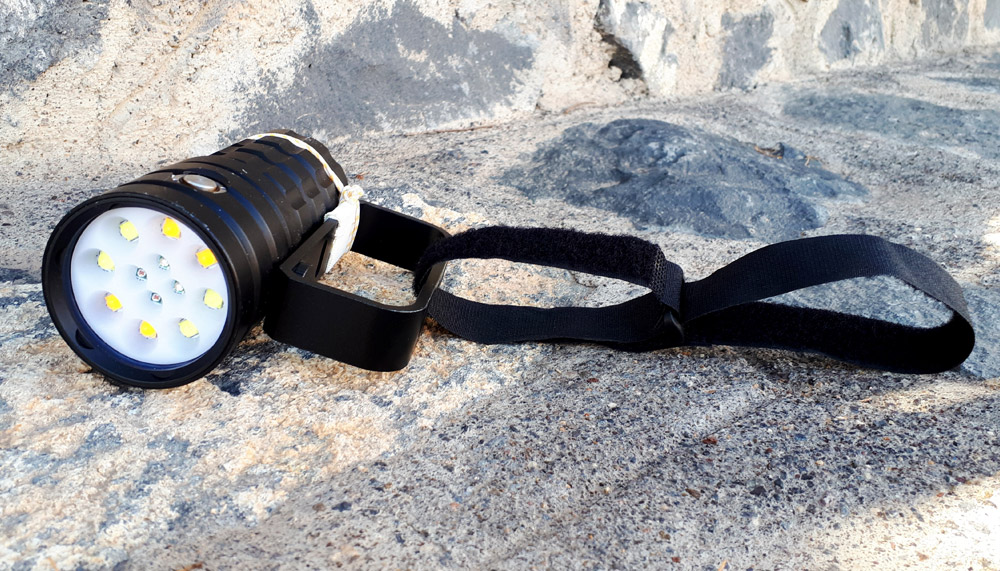
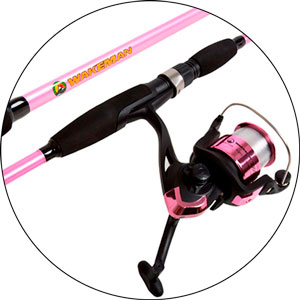
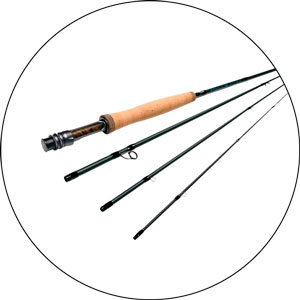

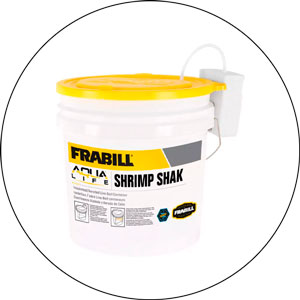
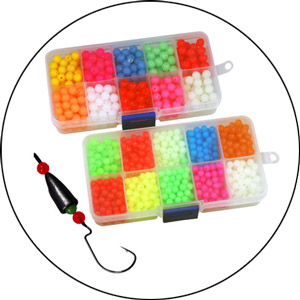

This article presents equipment ranging from thick to thin wetsuits, from elite spearguns to simple crossbows, flippers professional and for snorkeling, flashlights for videotaping to ordinary waterproof. It’s like a collection from retro to modern. It was a pleasure to read it.
Hi all. Several years ago I bought a Chinese battery-powered headlamp. It looks a little simple. But it works like a good Swiss watch. Without recharging, it can shine for 8 hours. Not once in all my fishing trips has it failed me. It was cheap. Price super quality is a good buy.
As a spearfisher, I can attest to the fact that there are specific masks you should use for this activity. A low-volume mask is ideal because, as you dive deeper, you need to let a little air in to prevent mask squeeze. Using a lower-volume mask means you waste less air in the process. A single-lens mask usually isn’t low-volume enough.
Regarding fins, freediving fins are designed to be long and efficient. They may not be the most powerful or fast (duck fins are much quicker), but their purpose is to conserve your oxygen while you dive. As a hunter, there is a limit to the fin length you would want.
You’ll also want to consider using a different wetsuit, depending on the water temperature. Scuba suits are typically double-lined and single-piece, while spearfishing freediving suits are often two-piece (farmer John style) with an open cell interior. This design offers more freedom of movement and tends to be warmer.
When I started spearfishing, I used my scuba gear, and it worked well enough to catch plenty of fish. However, freediving gear does make a significant difference in comfort and the ability to push your limits. For me, upgrading my fins and wetsuit made the biggest impact.
As you learn techniques (such as duck or single-leg surface dives) and get used to handling the speargun, it’s perfectly fine to use scuba gear. Over time, as you gain experience and ability, you can gradually add more specialized spearfishing equipment to your arsenal.
Choosing the right beginner’s speargun can be a challenging decision. Many experienced spearfishers may recommend going for a high-quality brand like Rob Allen, but these guns can be quite pricey for a beginner. It’s important to note that people can be very brand loyal, and every speargun is designed to catch fish.
There are numerous pipe gun designs on the market, and the main differences lie in their quality, durability, and ease of use. Generally, opting for a well-known brand (such as Rob Allen, Beuchat, or Cressi) is a safe bet. Beuchat offers some affordable beginner options like the Beuchat Espadon, which is relatively cheap but functional. However, some spearfishers may not be fans of Beuchat gear, so it’s essential to explore other options as well.
The author of the comment started with the most affordable gun they could find, the 75cm Beuchat Espadon, and it still serves them well after three years. They also purchased a long gun, the Beuchat Marlin Evil, for hunting in open areas and found it to be a better-quality gun.
Taking care of your speargun, even if it’s an inexpensive one, is crucial for its longevity. Rinse it out after use, store it away from sunlight, and avoid rough handling. In the end, the amount you spend on a speargun is up to you; while a well-constructed gun will provide a better experience, it’s not necessary to spend a fortune to get started in spearfishing.
When selecting a mask for spearfishing, it’s essential to choose a low-volume black-skirted mask with clear lenses. The black skirt helps block out excess light, allowing your eyes to adjust more quickly to the low-light situations you’ll likely encounter underwater. While some spearfishers may prefer mirrored lenses, it’s generally safer for your buddy to be able to see your eyes.
Fit is crucial for comfort, so it’s highly recommended that you try on masks in-person at a dive shop. Aesthetics should take a backseat to the fit, which is why most freediving shops offer a wide variety of masks to try on. To test for a good seal and comfortable fit, place the mask on your face without using the strap and lightly inhale through your nose. There should be no air coming in, and you should not experience any discomfort, especially around the bridge of your nose or brow area. Any reputable dive shop should be able to assist you with this process as well.
It’s generally recommended to opt for a fin with a removable foot pocket. This allows for the use of different blades in the same foot pocket, as well as easy replacement of broken blades without needing to replace the entire fin. A well-constructed fin should not bend at the base of the foot pocket when held by the back of the heel.
There are three main types of fin blades to choose from, each with its pros and cons:
The author of the comment has owned various fin types, including one pair of plastic, two pairs of fiberglass, and one pair of carbon fins. Their experience suggests that you get what you pay for in terms of quality and performance. While they appreciate their carbon fins and noticed significant improvements, the technique remains a crucial factor.
If you’re interested in gradually progressing through different fin materials, qualities, and price levels, you’ll likely appreciate each step up in performance. However, if you prefer to invest in the best fins from the beginning, a high-quality pair of carbon fins would be the ideal choice. It’s essential to handle them with care, as they can be more fragile and susceptible to damage from heavy objects or contact with rocks and coral.
The saying “buy good, buy once” is quite applicable in the world of spearfishing. If you have easy and regular access to the sea, you might find yourself investing more and more in the sport as you become addicted to it. Devin is a good place to start if you don’t have local shops where you live. However, supporting local shops is preferable, as long as their prices aren’t too excessive.
A low-volume mask is recommended, and if you’re diving in calm waters without the risk of scratching your fins on rocks, carbon fins are a great choice. As for wetsuits, a custom-made one is the best option, but if you’re not overweight, you can still find decent wetsuits at stores like Decathlon. Keep in mind that $500 is on the lower end of the budget spectrum.
For beginners, a 90cm gun is a good choice, and using an elastic-powered gun can be more enjoyable, according to personal preference. Remember never to dive alone and consider taking a freediving course if you haven’t already.
It would seem quite unnatural for someone new to spearfishing to immediately purchase a $500 or $1,500 speargun, especially after only having one shore dive and spearing a single 4″ fish. While $500 and even $1,000 guns might be in your future, they can be considered overkill for a beginner.
One might trade up in as little as six months, and if they were wealthy, perhaps starting with a $500 RIFFE gun would be an option. However, since most of us aren’t in that financial position, the advice here is for those who want to have fun reliably but can’t afford to drop $2,000 on gear right away.